

The underbelly of Paris: Visiting the Paris sewer museum
Posted on Last updated: March 19, 2024
Take a trip below the streets of Paris to the Musée des Égouts de Paris – the Paris sewer museum – one of the city’s more unusual attractions where you can discover what goes on in the underbelly of Paris.
* This site contains affiliate links , where I get a small commission from purchases at no extra cost to you.
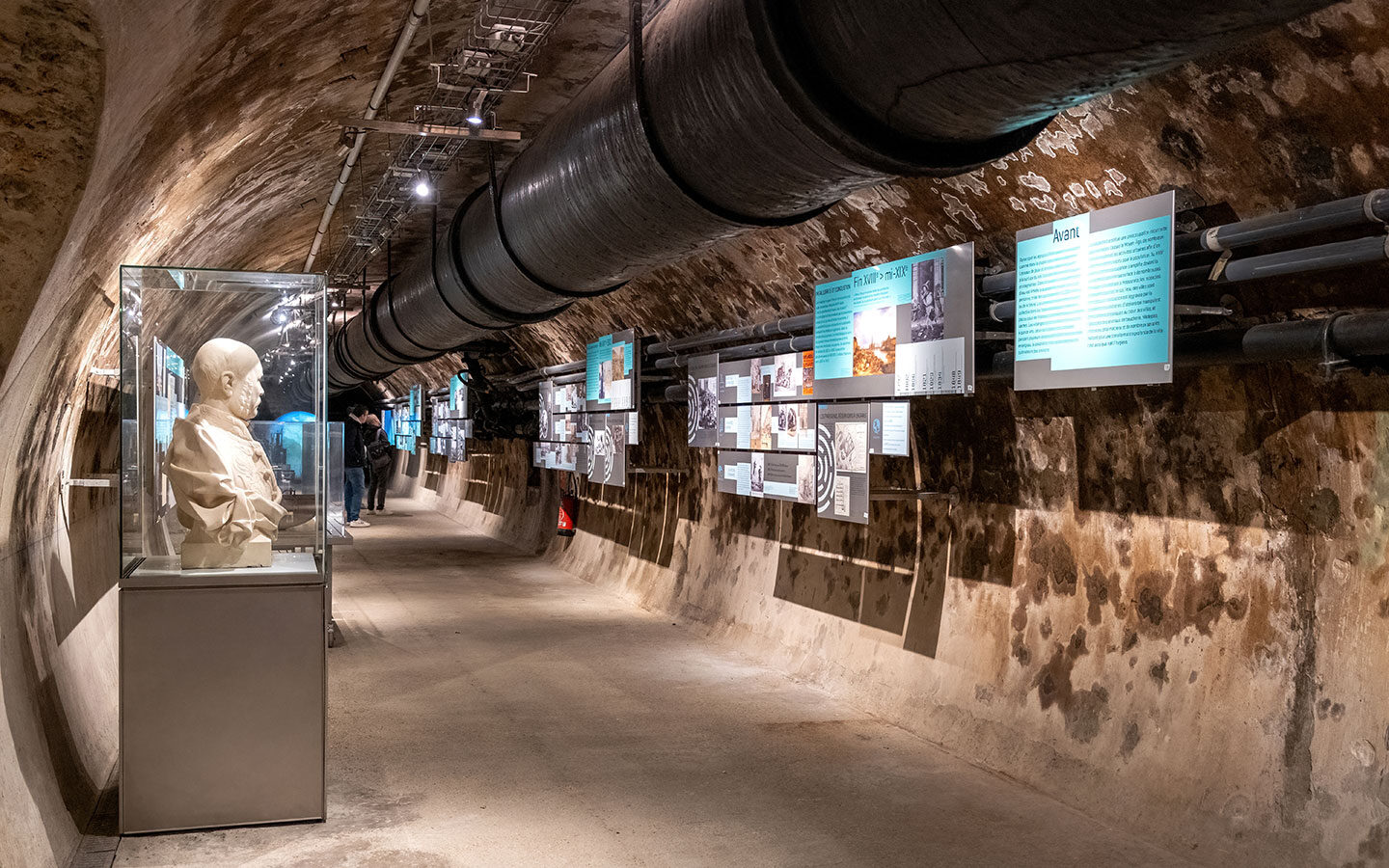
Beneath the streets of Paris is another city, with the same street layout and the same road names, but hidden underground in the city’s 19th-century sewer network. And you can explore this secret world at the Musée des Égouts de Paris (Paris sewer museum).
It might not sound like the most obvious tourist attraction, but visitors have been touring the Paris sewers since the 1860s. And if you’re looking for a quirky alternative to the usual Paris sights, are interested in engineering or a fan of Les Misérables (the sewers were Jean Valjean’s hideout), you might be tempted to head into the underbelly of Paris too.
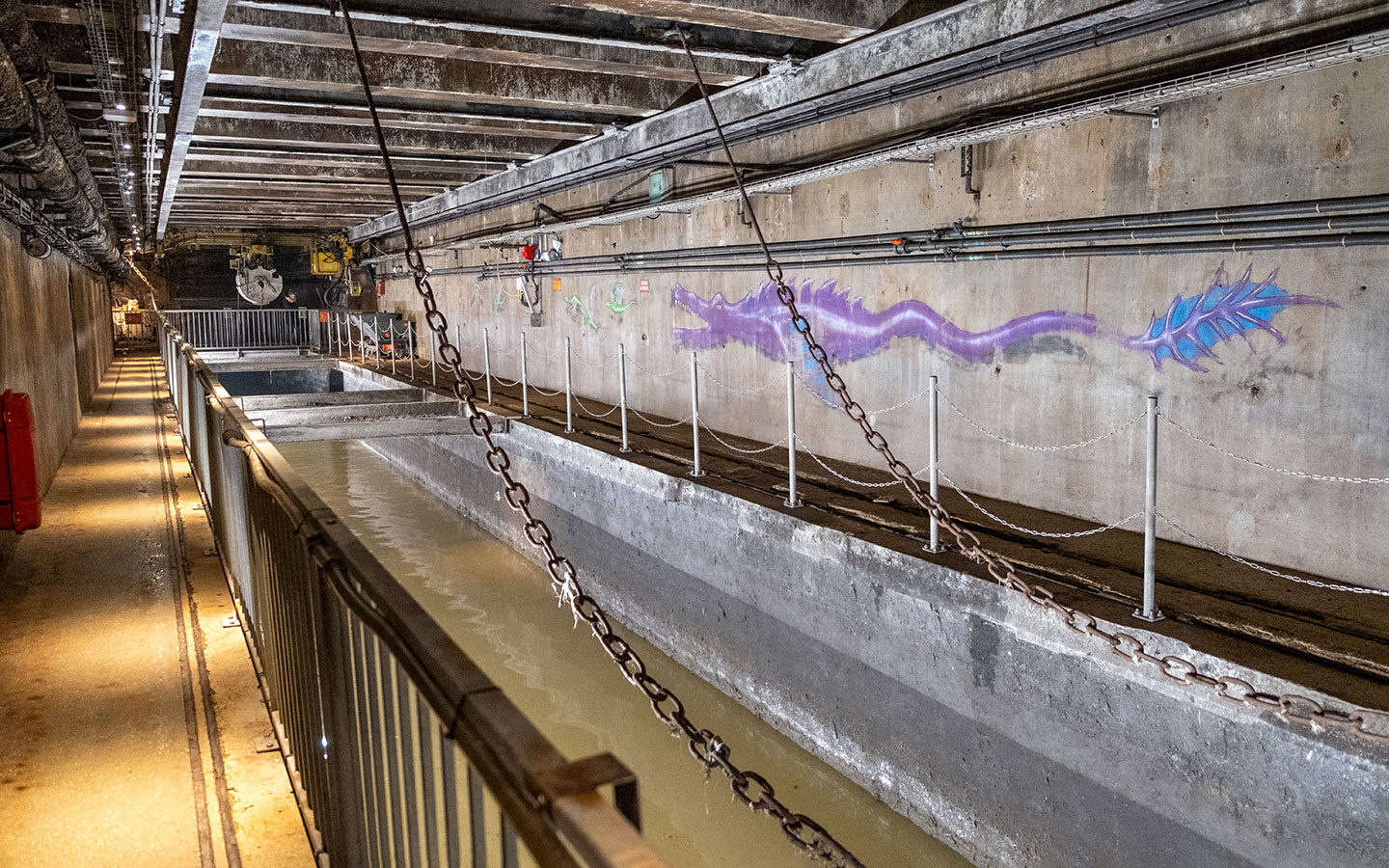
The history of the Paris sewers
Until the Middle Ages, Parisians got their drinking water from wells or directly from the Seine. And any waste went into cesspits or was discharged into the streets, so it eventually ended up back in the river. But as the city’s population grew, the river got more polluted, and thousands of people were killed in outbreaks of diseases like cholera.
Paris’ first sewer was built in 1370 – before then waste just ran down a channel in the middle of the road. But the early sewers were still open so didn’t do much to help prevent disease. So in the 1800s, as part of Baron Haussman’s redevelopment of Paris, an engineer called Eugène Belgrand was called in to improve the city’s water and waste systems.
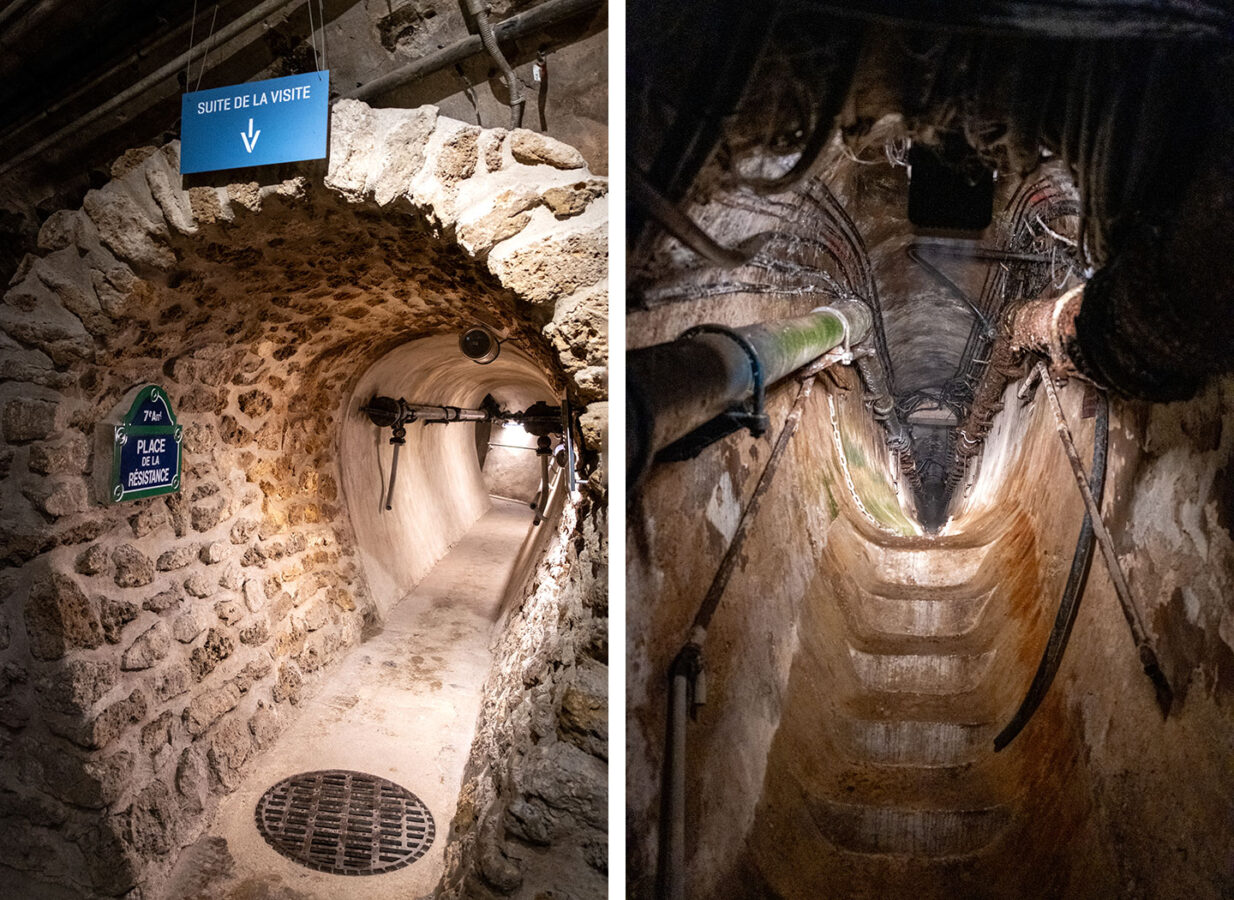
Belgrand designed a completely new network of underground tunnels for drinking water, non-drinking water and waste. He also built water treatment plants and aqueducts, and developed clever tools like dredgers and balls to keep the sewers running.
The tunnels ran for over 660km by 1878 and hundreds more kilometres were added over the next few centuries. They form a network below the surface which mirrors the one above ground, so every street has its own sewer complete with a matching street sign.
“Paris has another Paris under herself; a Paris of sewers; which has its streets, its crossings, its squares, its blind alleys, its arteries, and its circulation, which is slime, minus the human form.” Les Misérables
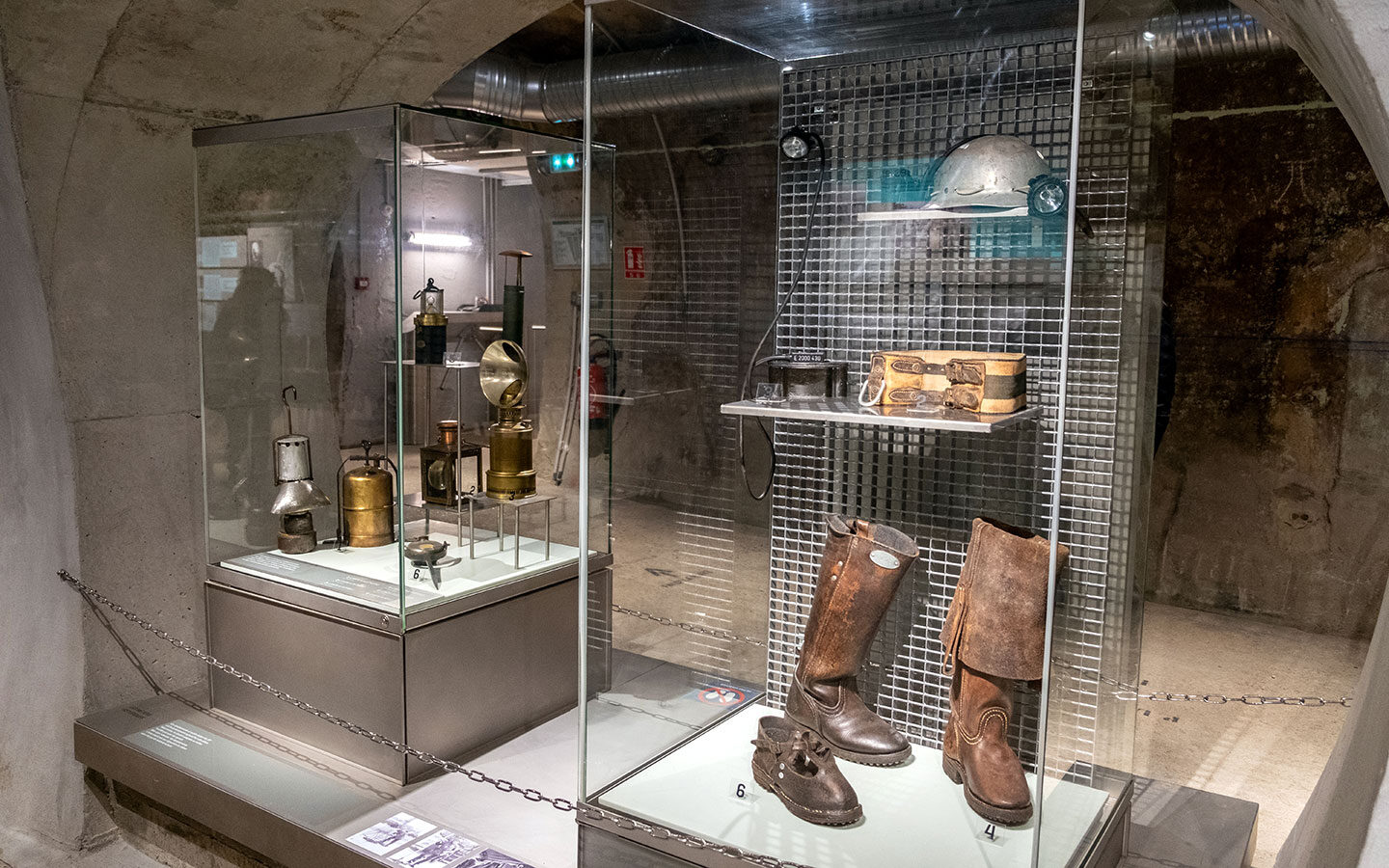
The sewers have always fascinated visitors to Paris, and they were first opened up to tourists during the 1867 Paris Exposition to show off how modern the system was. Back then visitors travelled around the sewers on board a boat or in a dredger wagon, and later they were carried around the tunnels in carriages pulled by a locomotive.
In 1975 the boat tours stopped and the Musée des Égouts de Paris or Paris sewer museum opened – a slightly more sanitary way to see how Paris deals with its waste.
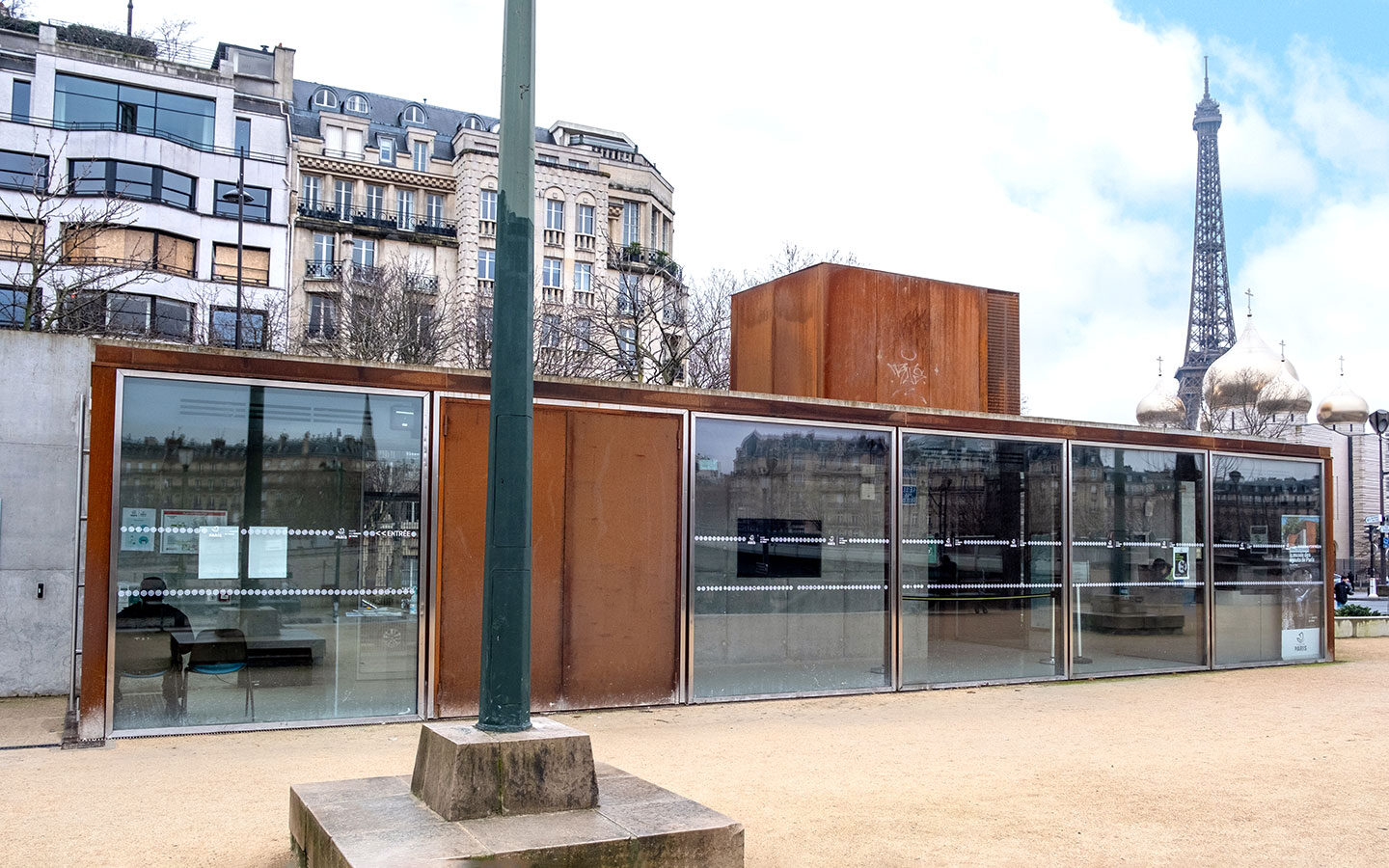
Visiting the Paris sewer museum
The Musée des Égouts de Paris is on the south bank of the Seine, close to the Eiffel Tower. Most of the museum is underground, so it’s easy to miss, with just a small, rust-red and glass building on the surface. The museum underwent a major refurbishment in 2021 with new exhibits inside and improvements like a lift to make it more accessible.
After buying your ticket in the office above ground, you head downstairs to the museum’s underground galleries. A long tunnel runs parallel to the Seine, along what once was the main sewer between the Place de la Concorde and the Pont de l’Alma.
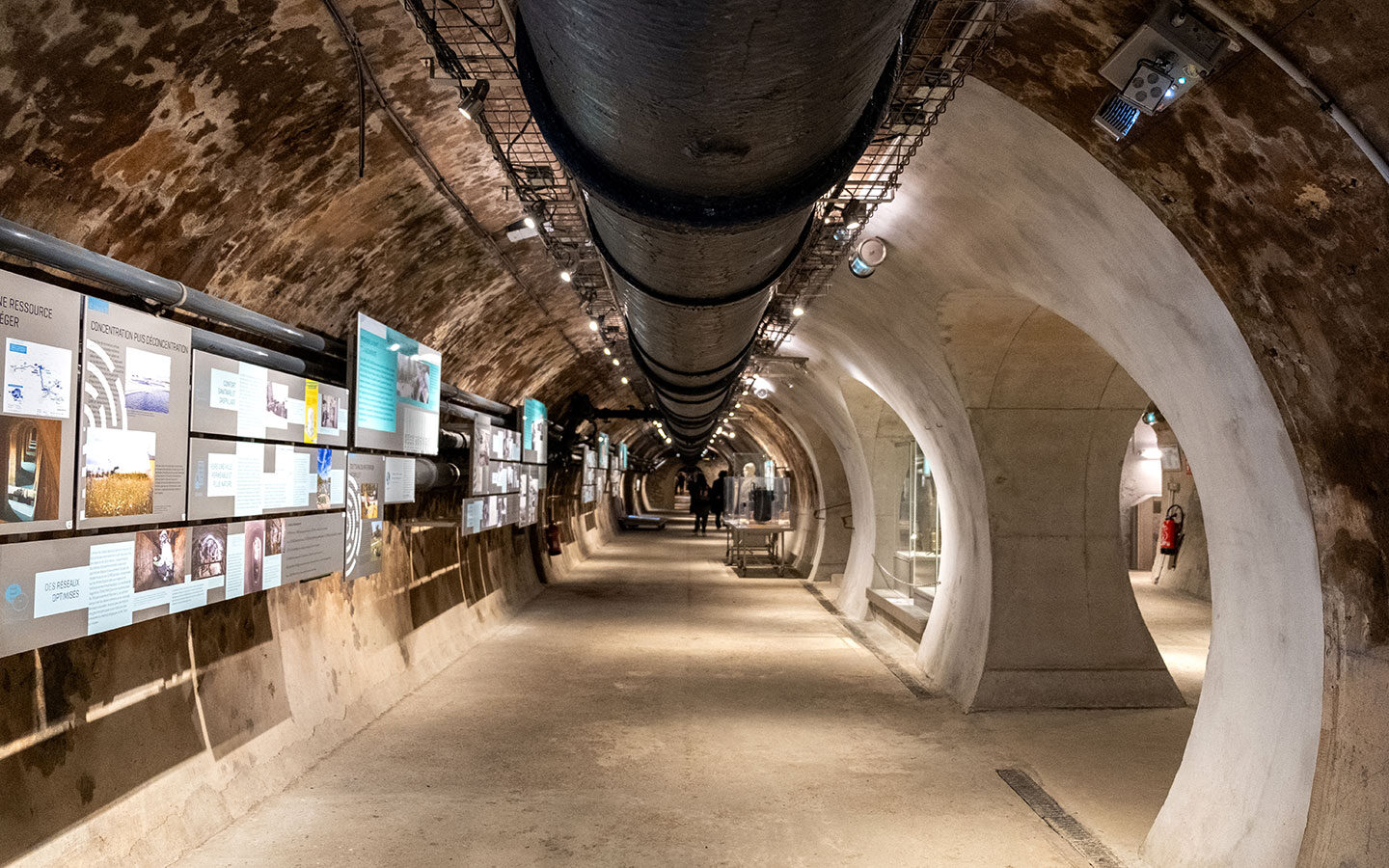
The tour route goes through a series of different galleries, and is self-guided, so you can take as long as you like. The information boards are all in French only but you can pick up an audio guide or access a PDF of information in English by scanning a QR code at the ticket desk. There are also tours led by sewer workers if you speak French.
The concrete tunnels are wide and spacious, decorated with a few murals like a giant rat (luckily the only one we spotted). Information boards take you through the history of how the sewers were built. But the most interesting part is the display of equipment used through the years, from dredging machines to giant balls used to clean the tunnels.
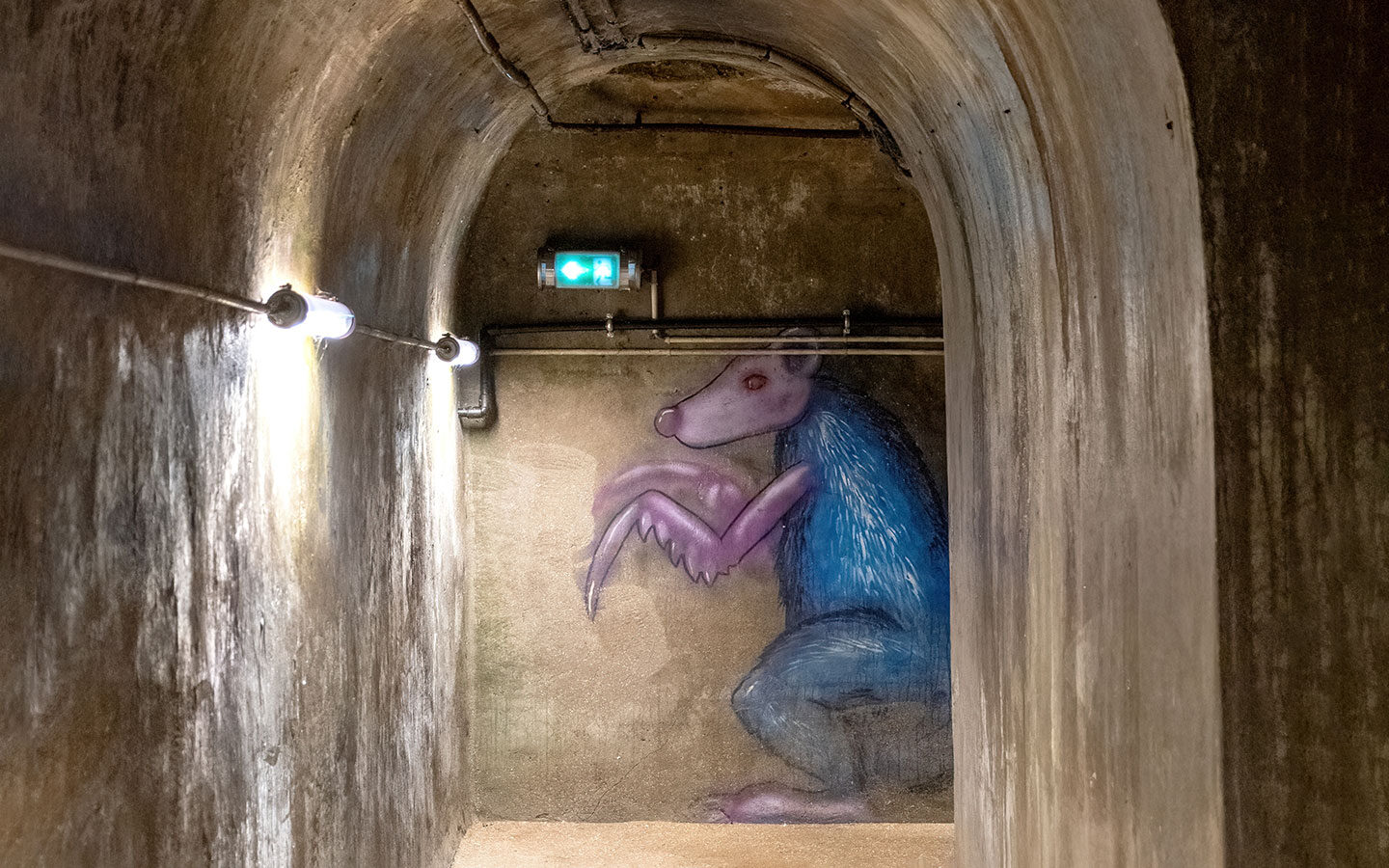
Blockages are a big risk to the sewers. So balls were made from wood or metal in different sizes which were sent down the tunnels. Water built up behind them until the pressure was so great that they pushed through the sludge and cleared any blockages.
You can also see what sewer workers do and get an insight into how waste is treated today, with a video and an interactive map showing how the sewer system has grown. A lot of improvements have been made – after hundreds of years of pollution, fish species are returning to the Seine and the plan is that people will be able to swim in it by 2025.
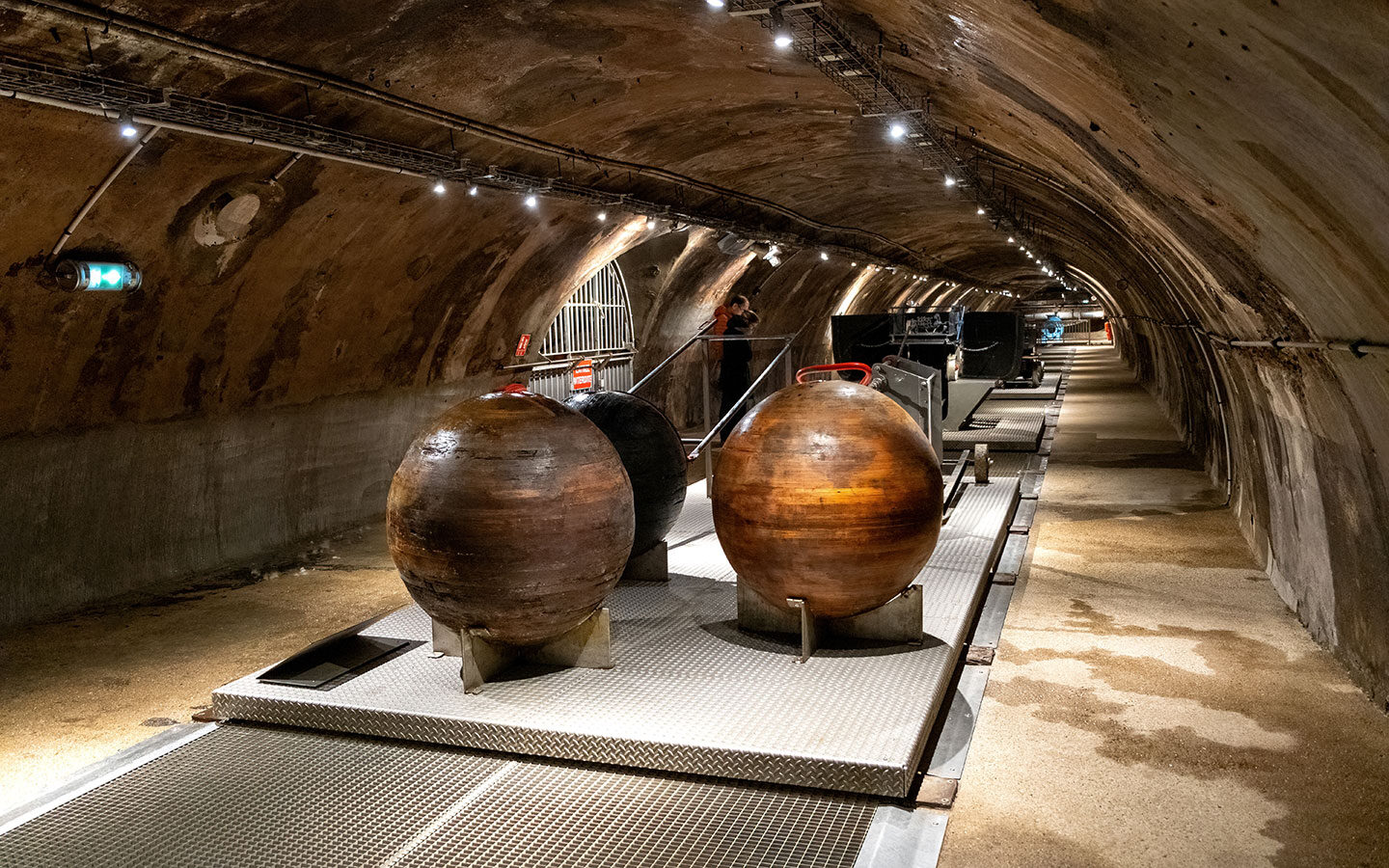
But the big question is how bad does the Paris sewer museum smell? Part of the tour takes you along an active sewer so you definitely pick up some odours, but it’s not unbearable (apparently how strong it is varies depending on how full the sewers are).
Even the museum toilets are educational – with interactive panels showing where the water comes from and goes next. You’re advised not to eat or drink, or touch anything while you’re down there, and wash your hands before leaving. And there’s even a gift shop where you can pick up a souvenir of this less glamorous, but vitally useful, side of Parisian life.
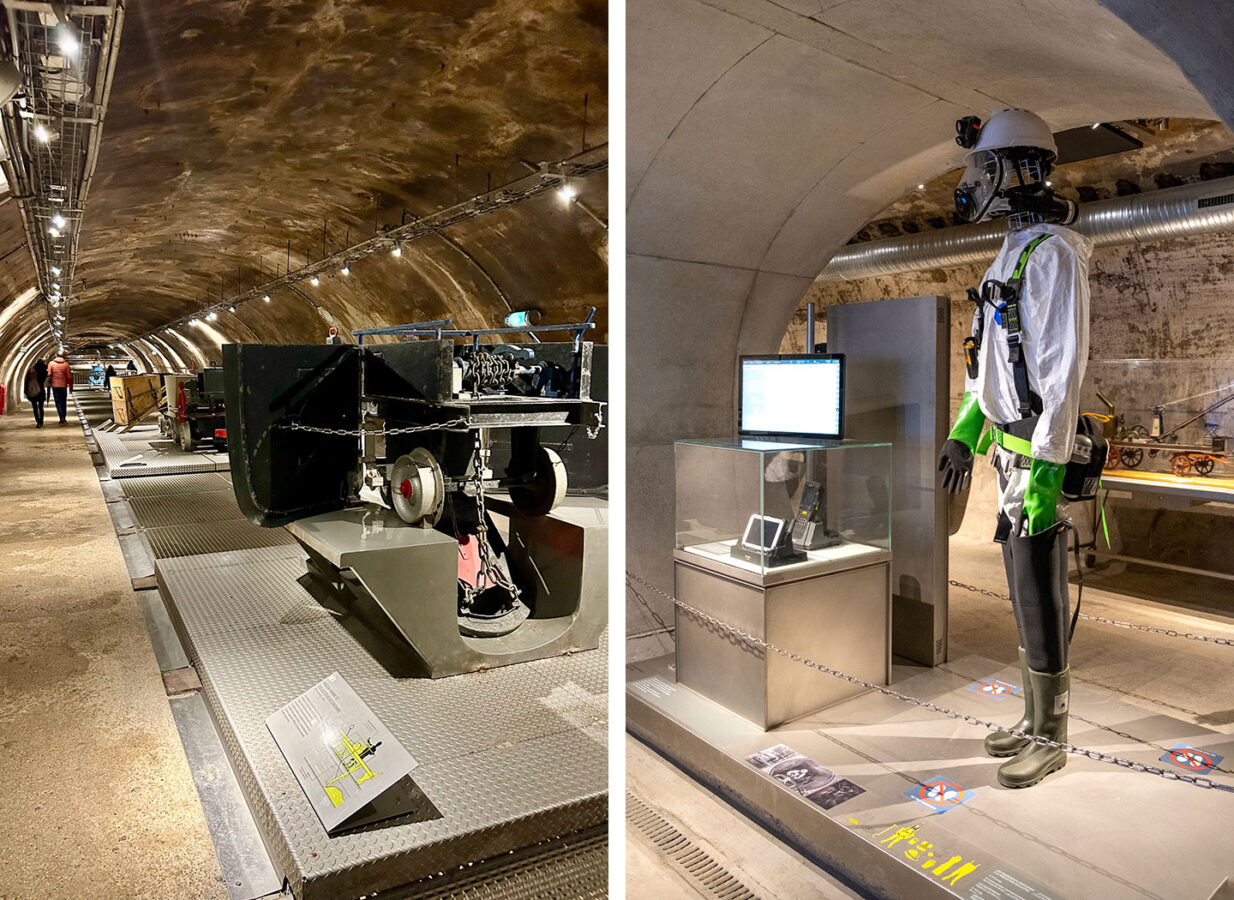
The details
Where is the paris sewer museum.
The Musée des Égouts de Paris is on the south bank of the Seine at Place Habib Bourguiba, next to the Pont de l’Alma. The nearest Métro station is Alma-Marceau (Line 9), on the other side of the bridge. Or Pont de l’Alma RER station (Line C) is even closer.
How much does it cost to visit?
Entry costs €9 for adults/€7 for over 65s, or is free for under 18s and EU residents under 26. You can book tickets online in advance but you don’t normally need to as it’s not too busy. The tour is self-guided and takes around an hour. There are audio guides available in French, English and Spanish. Or you can scan a QR code to access online information.
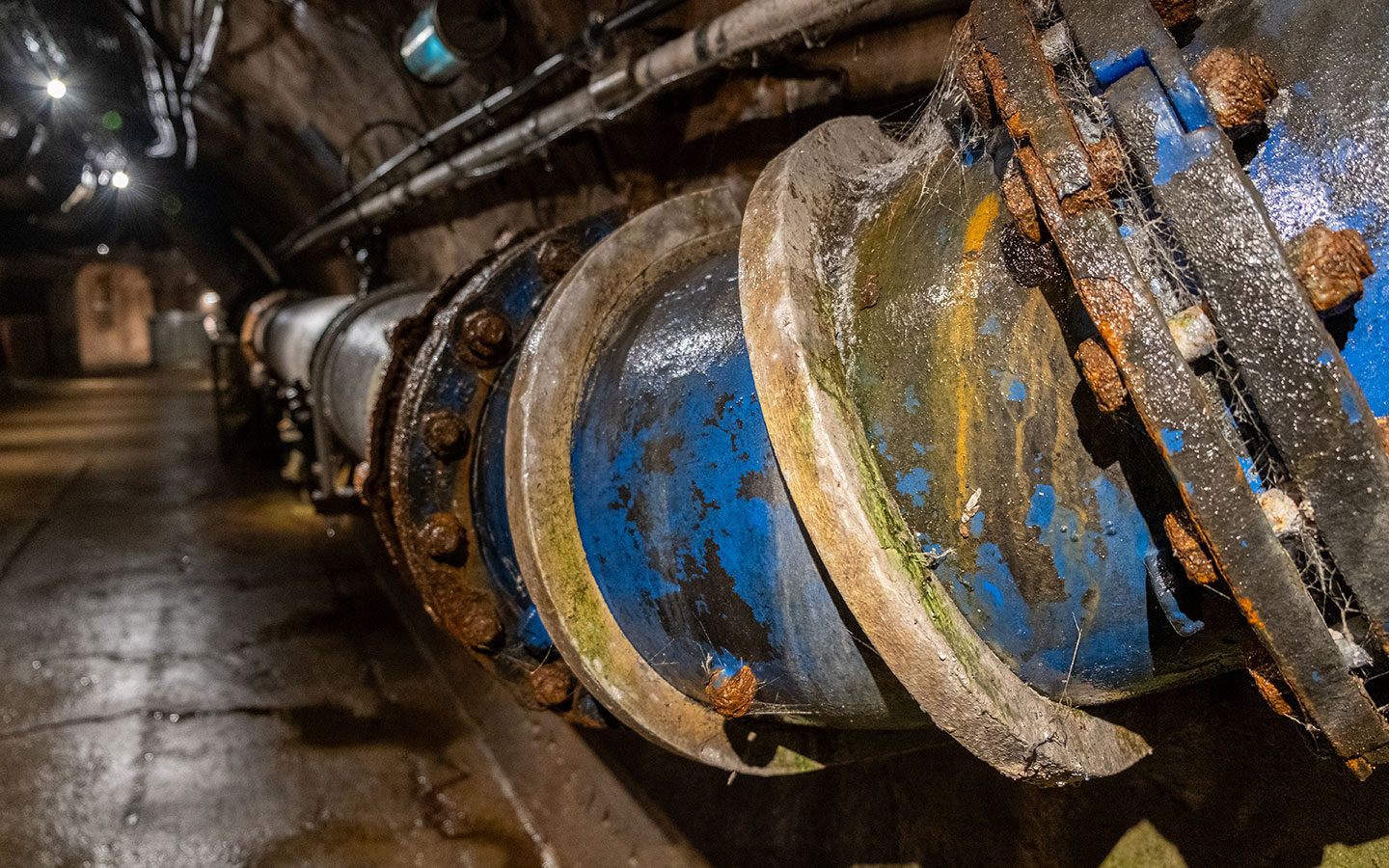
When is the Paris sewer museum open?
The museum is open Tuesday to Sunday 10am–5pm, with last admission at 4pm. It’s closed for the first two weeks in January, as well as on 1 May and 25 December. And can sometimes close if there’s been very heavy rain and the water level is too high.
What else is there to do nearby?
There are lots of places to visit near the Musée des Égouts. The Musée du Quai Branly anthropology museum is just a few minutes’ walk along the Seine. Or continue on along the river and you’ll reach the Eiffel Tower in 15 minutes. And you can pick up a Batobus or Bateaux Mouches boat tour from the quay in front of the tower.
Or cross the Pont de l’Alma to visit the Musée d’Art Moderne or Musée Yves Saint Laurent. You can also walk to the Champs-Élysées or Tuileries gardens within 20 minutes.
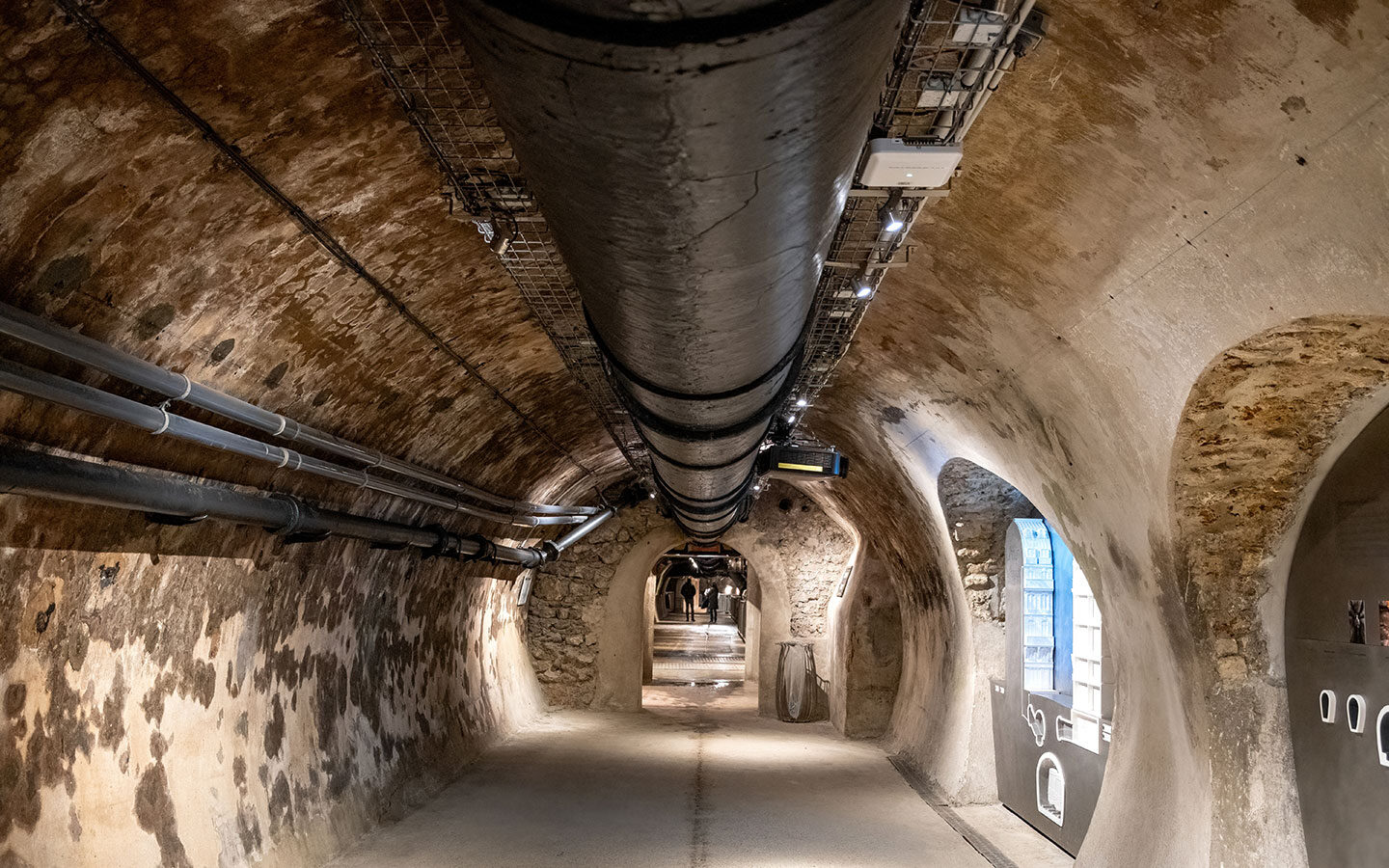
Looking for somewhere to stay in Paris?*
Save for later
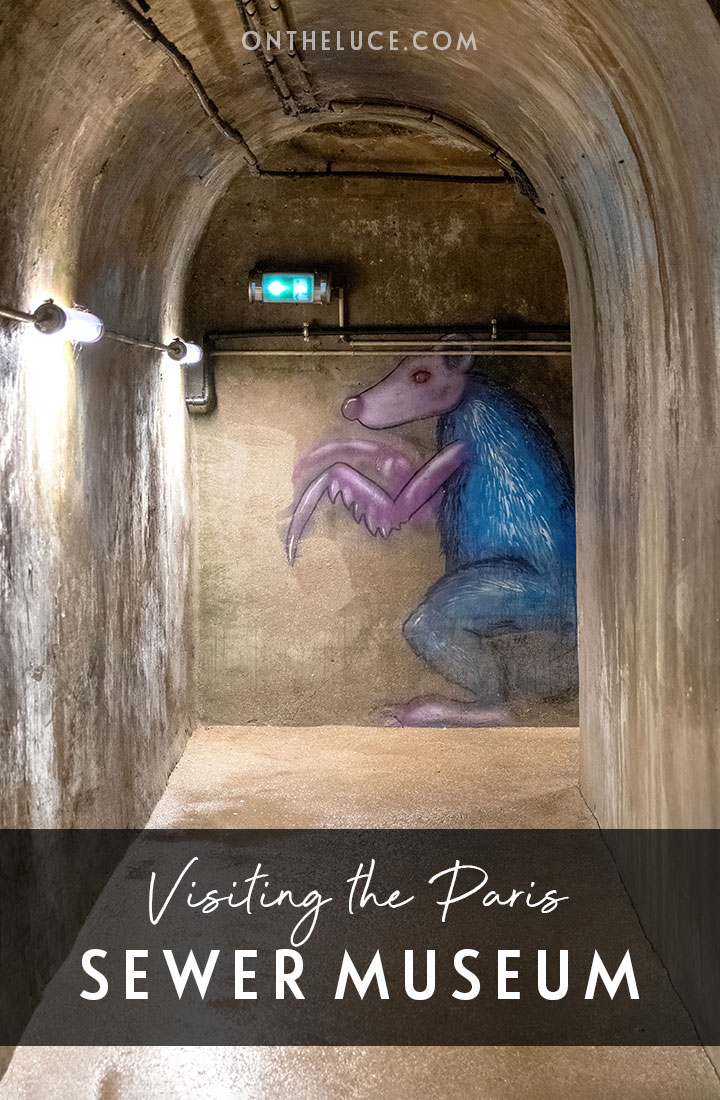
You might also like
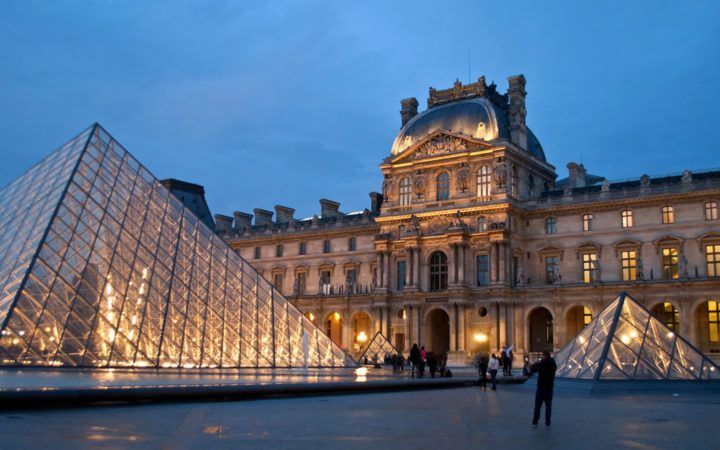
Alternative things to do in Paris

Visiting the Paris catacombs: Paris’ eerie underground graveyard
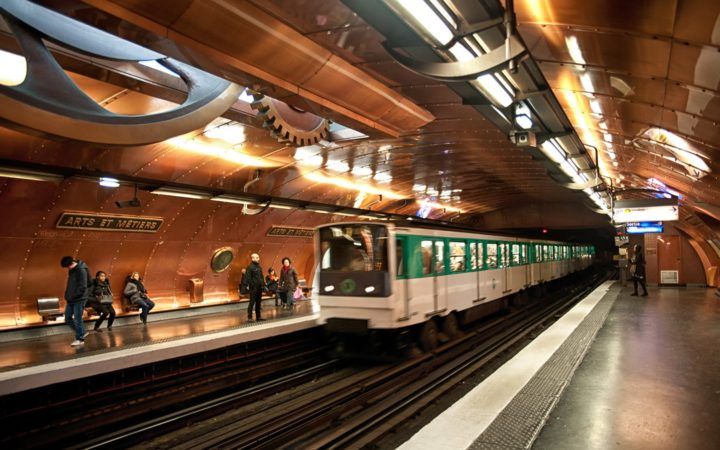
Arts et Métiers Metro: Paris’ steampunk subway station
Nomadic Matt's Travel Site
Travel Better, Cheaper, Longer
Unusual Place of the Month: The Paris Sewers
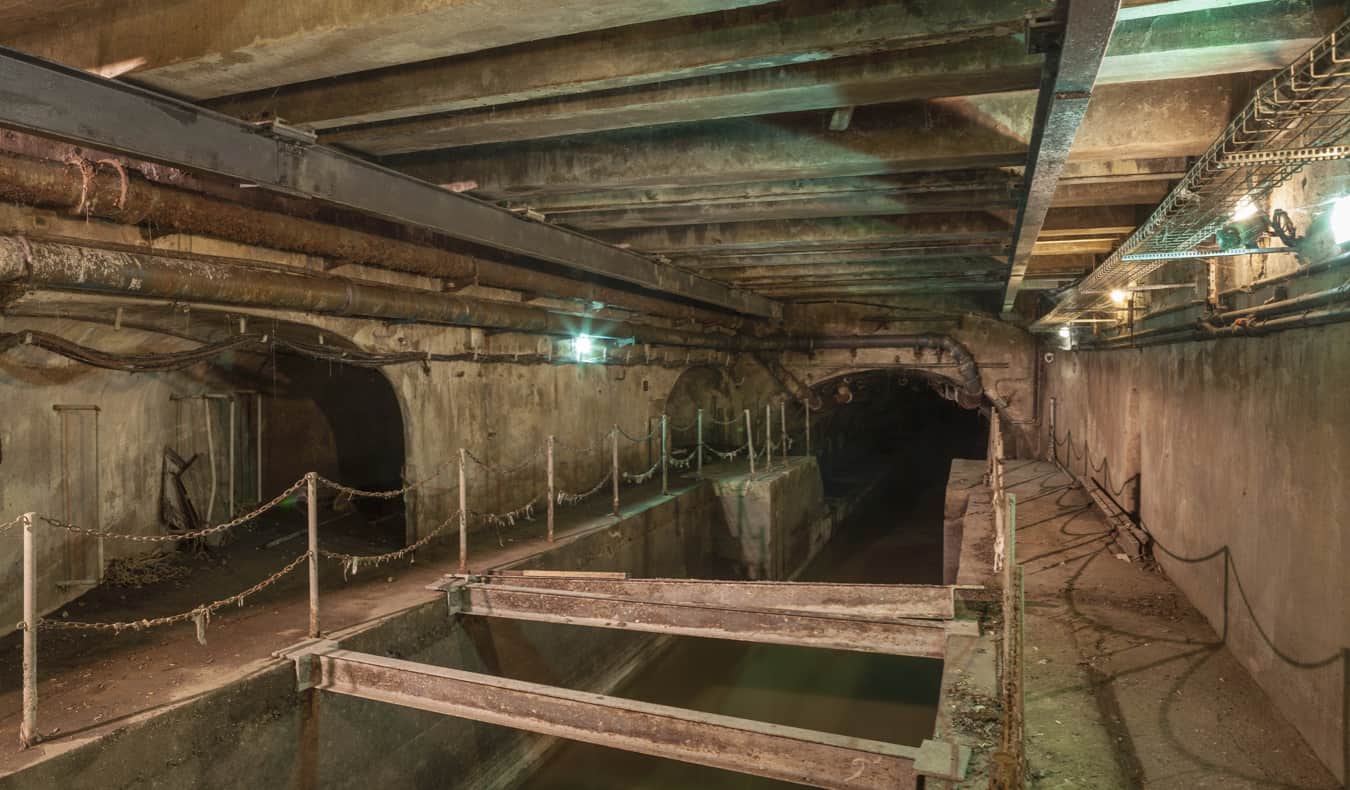
Paris . It’s one of the most romantic cities in the world. Sipping champagne at the Eiffel Tower, admiring incredible works of art at the Louvre, strolling along the Seine…..Paris is a beautiful city, but there’s more to it than meets the eye.
You just have to look below the surface.
Literally .
Some of the best sights in Paris are actually found underground. There’s the popular Catacombs of Paris , where you can explore bone-laden passages.
But there’s another place too: The Paris Sewers Museum (Le Musée des Égouts de Paris).
Paris is a gigantic city dating back thousands of years. From its early days as a Roman outpost through modern times, the city has had to deal with the one thing that comes with people: waste.
In ancient times, it wasn’t too big of a problem. The population wasn’t large enough yet to create any real pollution, so everything went into the Seine. Sure, the streets were dirty and smelled, but that was just a fact of life all the way through the Middle Ages.
However, as Paris grew in the Middle Ages, more and more waste went into the Seine, and by the late Middle Ages, the river was too polluted to use anymore. It stank and made people sick. Moreover, the streets were filthy with human and animal waste. People just threw their waste onto the street, where it just sort of stayed. (This was a common practice all over Europe up until the 19th century. In fact, part of the reason women began carrying those little parasols in the late 18th and 19th century was to protect themselves from falling… debris .).
Something needed to be done.
Beginning in 1370, the city started building sewers and drains. The sewers expanded under leaders like Louis XIV and Napoleon, but while the system got bigger and bigger, it still wasn’t effective. The waste still eventually made its way to the Seine, and diseases like typhoid spread. Victor Hugo, who wrote Les Misérables , described the sewers as “fetid, wild, fierce…”
In the 19th century, the city employed an engineer named Eugene Belgrand. He expanded the sewer system (adding over 1,000 kilometers/621 miles of new sewers) and the size of the drains and roads, started a treatment plant, and began to build aqueducts so Paris could pump in drinking water from the surrounding area.
As the sewers expanded, disease and pollution declined, leading to decreased mortality rates.
Paris now has over 2,100 kilometers (1,304 miles) of pipelines that, if stretched out, would reach all the way to Istanbul . It’s the biggest system in the world and deals with over 1.2 million cubic meters of wastewater each day.
The sewers opened to tourists during the 1867 World Expo and have been a huge draw ever since. The museum lets you explore part of the sewers and learn how the city copes with all its waste. It’s a very informative exhibit, with most of the signs in French, German, and English. You’ll get to walk through some of the active sewers and can hear the waste flowing to its final destination below you. And it actually doesn’t smell that bad.
The tour can be done in 30 minutes or less. In the beginning, there are some pictures and information on the history of the sewers, as well as some of the old machines they used to clean them. There are a few parts where some of the displays are only in French, but most of the content was in English as well. Keep your eyes peeled for the large metal balls too. They were actually used to clean the sewers, as the water pressure would roll them through the sewers and unblock the debris that had built up.
Everyone comes to Paris to see the Louvre, the Eiffel Tower, and Notre Dame. But the Paris Sewers Museum offers a behind-the-scenes look and unique perspective on how this modern city deals with an age-old problem. It was one of the most unique things I’ve done — and I highly recommend a visit. (Plus, there are no lines.)
Oh, and just make sure to bring some hand sanitizer for when you are done!
How to Visit the Paris Sewers Musuem
The Paris Sewers Museum is near the Alma Marceau metro stop. It’s right across the bridge on your left. The museum is open Tuesday to Sunday from 10am to 5pm (last admission is at 4pm). Admission costs 9 EUR for adults, with discounts available. Audio guides are also available and admission is free with the Paris Museum Pass .
Get Your In-Depth Budget Guide to Paris!

For more in-depth information, check out my guidebook to Paris written for budget travelers like you! It cuts out the fluff found in other guides and gets straight to the practical information you need to travel around Paris. You’ll find suggested itineraries, budgets, ways to save money, on- and off-the-beaten-path things to see and do, non-touristy restaurants, markets, bars, transportation and safety tips, and much more! Click here to learn more and get your copy today!
Book Your Trip to Paris: Logistical Tips and Tricks
Book Your Flight Use Skyscanner to find a cheap flight. They are my favorite search engine because they search websites and airlines around the globe so you always know no stone is left unturned!
Book Your Accommodation You can book your hostel with Hostelworld as they have the biggest inventory and best deals. If you want to stay somewhere other than a hostel, use Booking.com as they consistently return the cheapest rates for guesthouses and cheap hotels. Three good places to stay are:
- St. Christopher’s Canal
- 3 Ducks Hostel
- Les Piaules
If you’re looking for more places to stay, click here for a complete list my favorite hostels in Paris .
And, if you’re wondering what part of town to stay in, here’s my neighborhood breakdown of the city !
Don’t Forget Travel Insurance Travel insurance will protect you against illness, injury, theft, and cancellations. It’s comprehensive protection in case anything goes wrong. I never go on a trip without it as I’ve had to use it many times in the past. My favorite companies that offer the best service and value are:
- Safety Wing (best for everyone)
- Insure My Trip (for those over 70)
- Medjet (for additional evacuation coverage)
Looking for the best companies to save money with? Check out my resource page for the best companies to use when you travel. I list all the ones I use to save money when I’m on the road. They will save you money when you travel too.
Need a guide? Paris has some really interesting tours. My favorite company is Take Walks . They have expert guides and can get you behind the scenes at the city’s best attractions. They’re my go-to walking tour company!
Want More Information on Paris? Be sure to visit our robust destination guide on Paris for even more planning tips!
Got a comment on this article? Join the conversation on Facebook , Instagram , or Twitter and share your thoughts!
Disclosure: Please note that some of the links above may be affiliate links, and at no additional cost to you, I earn a commission if you make a purchase. I recommend only products and companies I use and the income goes to keeping the site community supported and ad free.
Related Posts

Get my best stuff sent straight to you!
Pin it on pinterest.
About the author:

After 4-1/2 years of covering European travel topics for About.com, Durant and Cheryl Imboden co-founded Europe for Visitors (including Paris for Visitors) in 2001. The site has earned "Best of the Web" honors from Forbes and The Washington Post .
For more information, see About our site , press clippings , and reader testimonials .
Paris Sewer Museum (Musée des Egouts)
Exploring the City's Underground History
:max_bytes(150000):strip_icc():format(webp)/profilepic-CTraub-5b6ff65d46e0fb00505577c1.jpg)
Paris Sewer Museum
One of the city's odder tourist attractions, the Musée des Egouts (Paris Sewer Museum) affords visitors an intriguing glimpse into the historic sewer system, first developed around 1370 and extended very slowly in the centuries that followed.
Made up of a labyrinthine network of over 2400 km/ 1491 miles of tunnels and "galleries", the gouts (sewers) were not fully developed until the late 19th century. During that period, Baron Eugène Haussmann ( the guy best known for radically reshaping the Parisian cityscape into the guise that is mostly visible today) collaborated with another Eugène, the engineer Belgrade, to create a modern and efficient system for managing waste and water runoff.
Part of that then-groundbreaking network can today be visited, offering a genuinely unique perspective of what the city looks like from below ground.
The Parisian "égouts" have long captured imaginations. They've been referenced in great works of literature, such as Victor Hugo's Les Misérables and Gaston Leroux's Phantom of the Opera , which inspired the eponymous (and more popular) musical. Think about reserving some time for this offbeat and under-appreciated attraction.
Is It As Disgusting As It All Sounds?
In a few words: the "ick" factor is not exactly a small one on this tour: during the visit, you traipse across raised walkways and are able to see the sewage running below. If you're sensitive to unpleasant smells, this may not be the museum of choice for you.
Read related feature: Weird and Eclectic Museums in Paris
Location and Contact Information:
The Sewer Museum is located in Paris' stately and elegant 7th arrondissement (district), not far from the Eiffel Tower and, eastward, the Musee d'Orsay and its world-famous collections of impressionist and expressionist art.
Address: The museum can be accessed via the Pont de l'Alma, left bank, facing 93 quai d'Orsay. Metro/RER: Alma-Marceau (Metro line 9); cross bridge to reach the museum; Pont de L'Alma (RER Line C) Tel : +33(0)1 53 68 27 81 E-mail/for information: Visite-des-egouts@paris.fr Visit the official website (in French only)
Opening Hours, Tickets, and Other Practical Details:
Between October 1st and April 30th, The Musee des Egouts is open from Saturday through Wednesday, 11:00 am to 4:00 pm. Between May 1st and September 30th, the museum is open Saturday through Wednesday from 11:00 am to 5:00 pm. Closed on Thursdays and Fridays.
Tickets: Tickets for individuals can be purchased without reservations. The current full-price ticket costs €4.30; discount admission (€3.50) for students, groups with a minimum of ten people, and for children between the ages of 6 and 16. Admission is free for small children under the age of six. Please note that ticket prices, while accurate at the time this article was published, may change without notice.
Group Tours: Groups comprising a minimum of ten people can reserve guided tours of the sewers in advance by sending an e-mail to Visite-des-egouts@paris.fr. Individual visitors do not need to reserve ahead to book a guided tour.
Sights and Attractions Nearby:
- Eiffel Tower
- Musee d'Orsay
- Launch points for Paris boat tours : simple sightseeing, lunch or dinner cruise packages can be purchased with companies like Bateaux-Mouches and Bateaux Parisiens
- Quai Branly Museum (Dedicated to indigenous arts from Asia, Oceania and Africa)
- Musée de l'Armée (Army Museum) and Les Invalides (site of Napoleon I's tomb)
- American Church in Paris
History and Visit Highlights:
The Sewage Museum traces the fascinating history and development of the Parisian water and sewage systems. During your visit, which lasts around an hour, you'll learn not only about the history of the sewers from the middle ages onward, but also about water treatment methods and the evolution of purifying and sterilizing techniques from the Gallo-Roman period to the present day.
As you wind through the sewer tunnels, which lead you through an actual water treatment area, you'll see water purifying engines-- some models and some the real thing-- and other tools and materials used to treat sewage and water. These will have you feeling grateful that you live in an era in which sewage is properly treated-- and pity those poor Parisians who had to endure raw wastewater running through the streets.
Filming and photography is permitted throughout the tour, so get your cameras ready.
Read More About the Museum:
We can recommend this review of the museum from Manning Krull over at Cool Stuff in Paris for a fascinating and more in-depth look at the weird and wonderful underground world of the Parisian egouts.
Paris' Pont des Arts: The Complete Guide
All About the Yves Saint Laurent Museum in Paris
The 10 Most Beautiful Bridges in Paris
Eiffel Tower Profile and Visitors' Guide
The Louvre Museum in Paris: A Complete Guide for Visitors
The Paris Catacombs: Creepy, Interesting, or Both?
Les Invalides in Paris: The Complete Guide
The Top 12 Things to Do Around the Eiffel Tower
The Top 10 Things to Do in Paris's Saint-Germain-des-Prés District
Bois de Boulogne: The Complete Guide
All About the Jardin des Tuileries in Paris
18 Best Free Things to Do in Paris
Top 15 Things to Do at Night in Paris
Top 15 Monuments and Historic Sites in Paris
Getting Around Paris: Guide to Public Transportation
10 Things to Do in Paris For €10 or Less

- Top Attractions
Musée des égouts de Paris
The Musée des Égouts (Museum of the Sewers of Paris) is located in a very unusual location for a museum...in the sewers of Paris .
Walking down its narrow and dark passages, visitors will discover the history of the city’s sewage system and how it has evolved up until its present modern structure.
During the Middle Ages the population would take the water directly from the River Seine and once they had used it, they would throw it on the unpaved streets of Paris or in the countryside, much of it running back into the Seine.
Around the year 1200, the first drains were built and the streets were paved , and in 1370 the first covered sewer was built, which ran into a stream in the city.
During the First French Empire a covered sewage system was developed , covering an area of 18 miles (30 km). In 1878, a double water distribution network and a sewage system over 372 miles (600 km) long was introduced.
It was soon discovered that the filthy water had to be released far from the city center to avoid illnesses and plagues. Therefore, gutters were placed in every street, as well as water pumps and other essential requirements, transforming the sewage system into a modern structure, which was later renovated during the nineteenth century.
Visiting the Sewers Museum
During the tour of the sewer visitors will discover the evolution of the sewage system and its usage whilst wandering along its dark and humid passages.
During the visit you will learn about the flood that destroyed Paris in 1910 due to a malfunction of the sewage system , or how in Victor Hugo’s novel, Les Miserables, the sewers are extremely well portrayed, describing the dark tunnels and arches in detail.
Foul-Smelling but Interesting
The Paris Sewer Museum is a curious place since it is very rare to visit a city’s sewage system and find out what it is like beneath a city . However, visitors have to keep in mind that this museum is malodorous and damp. Even so, in our opinion it is worth visiting , as it is a unique opportunity to see something completely different and out of the ordinary.
Before leaving the museum, we recommend visiting the gift shop, where you'll find very unusual items like stuffed animal rats!
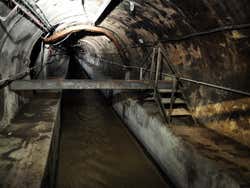
Quai d'Orsay 93, near Pont de l'Alma.
1 May - 30 September: Saturday - Wednesday: 11 am - 5 pm. 1 October - 30 April: Saturday - Wednesday: 11 am - 4 pm.
Adults: € 9 ( US$ 9.60) Reduced rate: € 7 ( US$ 7.50) Free entry with the Paris Pass and Paris Museum Pass .
Metro : Alma Marceau , line 9. Bus : lines 42, 63, 80 and 92.
Nearby places
Musée d’Art Moderne (444 m) Musée du quai Branly (483 m) Musée Guimet (703 m) Eiffel Tower (749 m) Champs de Mars (858 m)
You may also be interested in

Musée Grevin
Opened in 1882, the Musée Grévin is the wax museum of Paris. Visitors will be able to see representations of famous individuals that have had an impact on the course of human history.
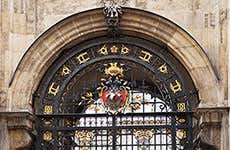
Musée Carnavalet
Opened in 1880, the Carnavalet Museum features several works of art through which visitors will be able to undertstand the history of Paris, from its foundation until the present day.
- Destinations
- Tours in Paris
Underground Sewers of Paris Small Group Tour

Overview of the tour in Paris
On this 1.5-hour exclusive tour, walk through darkened tunnels to learn the secrets of this underground world that manages the city’s water supply and protects it from flooding of the River Seine. From 19th-century engineering feats to cultural references such as in Victor Hugo’s ‘Les Misérables,’ discover the legends and marvels of this shadowy but vital labyrinth. Group size is limited to 15 for a more personalized experience. Do something ordinary tourists don't do. See in action outstanding engineering at work. And learn hands-on about that big question of our time: water conservation and water security.
This activity includes:
- Pont de l'Alma
- Ticket entrance to the Paris Sewers Museum
- local guide
Meeting point
We meet by the blue sign of the sewers, that reads “égouts de Paris”, outside the museum entrance, at the Left Bank tip of pont de l’Alma bridge.

Things to note
- You will receive instant confirmation voucher at the time of booking - This tour is not wheelchair compatible - The sewers feature high ceilings and wide space. But the space can be dark, damp or smelly. Cancellation Policy : 100% refundable if cancelled 24hours in advance. No refund past that date
Free Cancellation
Free Cancellation up to 24 hours before the activity starts. Late cancellation or your non-arrival is not refundable.
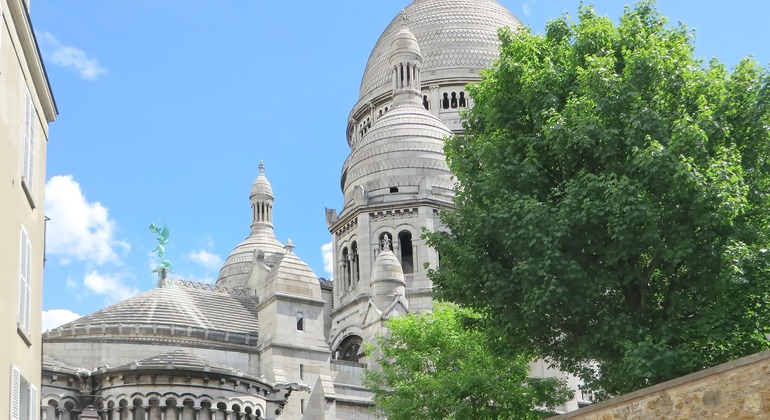
- Join Freetour
- Provider Sign In
- Affiliate Program
- Security & Privacy
- Terms & Legal
- Cookie policy
- Freetour Awards
- Ratings & Reviews powered by
- Skip to primary sidebar
- Skip to content
Paris Top Ten
Best of Paris
The History of the Parisian Underworld at the Paris Sewer Museum
Are you prepared to embark on an amazing voyage through the Parisian underworld? The Paris Sewer Museum offers a one-of-a-kind experience that will let visitors discover another side of this great city’s history. Delve deep into the underbelly of streets and uncover engineering wonders while exploring these sewers. An incredible journey awaits!
Table of Contents
Key Takeaways
Exploring the paris sewer museum: a unique attraction, the evolution of the paris sewer system, sewer workers: unsung heroes of the parisian underworld, navigating the paris sewer museum experience, accessibility and admission, getting there: transport options, embracing the sights, sounds, and smells, beyond the sewers: nearby attractions and activities, delving deeper: further reading and viewing, guided tours vs. self-guided exploration, souvenirs and memories: the paris sewer museum gift shop, frequently asked questions, why are the sewers in paris a tourist attraction, how long are the sewers in paris, how old are the sewage tunnels under paris, what is the admission price for the paris sewer museum, how long does a guided tour at the paris sewer museum last.
- Explore the Paris Sewer Museum for an informative journey through the city’s subterranean tunnels .
- Learn about the evolution of Paris’ sewer system and recognize its unsung heroes.
- Consider accessibility, admission fees and tour expectations to make the most of your experience.
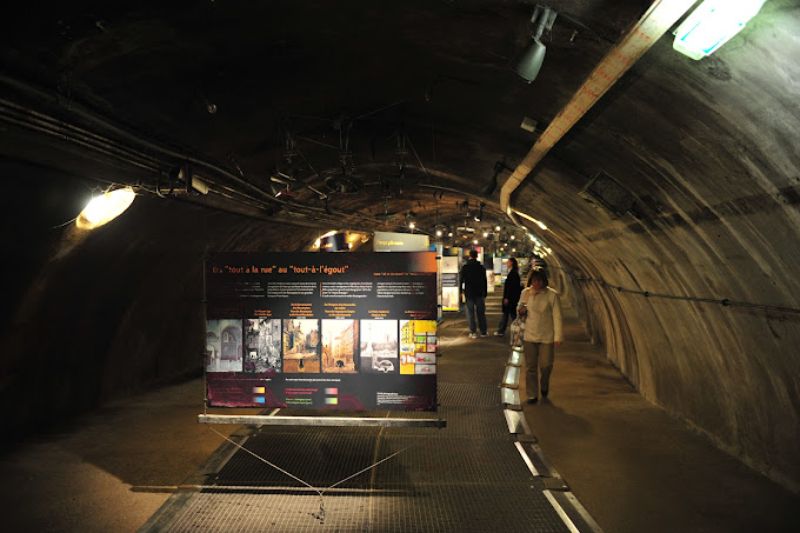
The Musée des Égouts de Paris , or the Paris Sewer Museum, is located inside of the same building as the city’s Sewerage Company. At this museum visitors are invited to journey through tunnels beneath ground level in order to gain a fuller understanding of how sewers have been used over time and what role they play in making sure that beautiful City of Light remains clean.
This sewer museum provides an extensive overview on both waste management and sewage systems within Parisian life which dates back many years, something tourists can appreciate when exploring its intricacies even further. A visit here offers a completely unique experience . From discovering engineering feats to experiencing history right at your fingertips – all found underground!
The Paris sewer system has a storied history dating back to the 1300s. It began with construction of sewers and drains in 1370, as the rapidly expanding city grappled for ways to handle its growing population’s waste disposal needs. The importance that this project had on forming essential infrastructure is explored at length by a museum dedicated specifically to the historic parisian sewer system – highlighting how it evolved from an idea right through two thousand one hundred kilometers (1,312 miles) across today’s grand scale incarnation.. Visitors can appreciate not just what went into creating such a vast maze of tunnels but also reflect upon vital policy decisions made throughout its development over time since Middle Ages era.
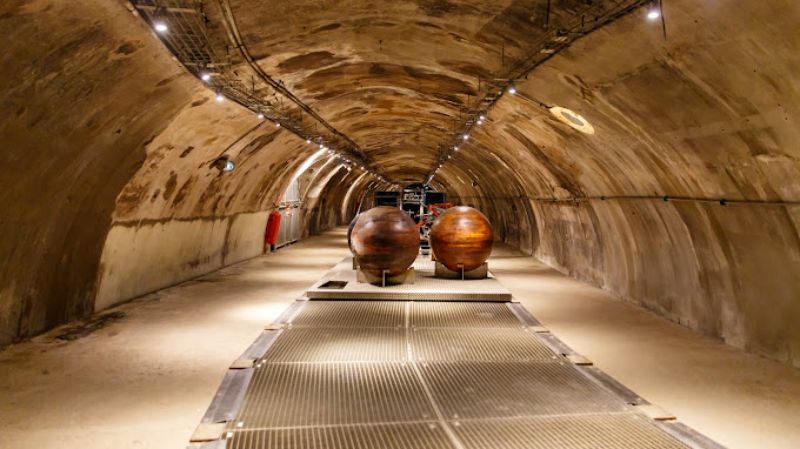
The maintenance and cleaning of the Parisian underworld’s underground systems is integral to keeping up with its city’s safety, sanitation, and overall well-being. Sewer workers take on a critical role in preserving these goals while also ensuring the proper functioning of water pressure by regularly inspecting and repairing any damages or leaks. To their own invaluable contributions, they assist in removing hazardous materials as well as clearing blockages for optimal flowage. Ultimately protecting citizens from pollution threats through monitoring quality standards.
Throughout history, this unsung group has been a driving force behind developing secure conditions within communities located near sewer networks such providing drinking watersystems that satisfy many hygienic needs across Paris populations . Their work should be highly praised! During your visit at The Seine River Museum dedicated to them pause ,recognize appreciate what an important service all those valiant souls have given us over time when it comes downe too looking after our cities cleanliness ..Our so owed gratitude goes out thank you !
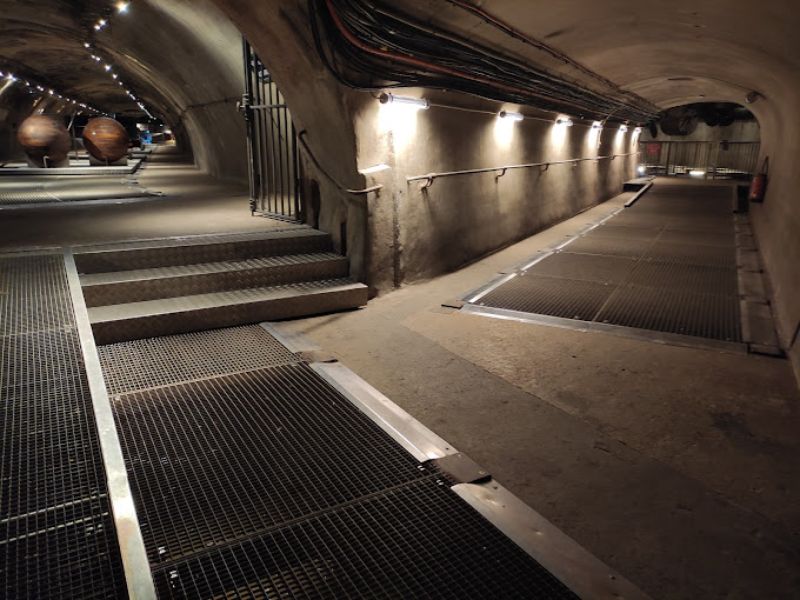
When planning your visit to the Paris Sewer Museum, it is important to consider factors such as admission fees and tour expectations. Whether you would like a guided exploration or self-guided journey, this museum contains plenty of insightful exhibits that will certainly give an appreciation for the capital’s secret structures beneath its surface. An adventure within these underground corridors provides unique insight into how this metropolitan city developed through centuries past.
Located near the Alma Marceau metro stop , the Paris Sewer Museum is open all year-round except for Thursdays and Fridays – with an additional two week maintenance closure in January as well as over Christmas and New Year’s. Visitors are treated to free admission for one accompanying support person at this museum that displays fascinating exhibits pertaining to history of sewer systems. Special prices apply also for people with disabilities. At the ticket office, adults pay €4.30 whilst children aged 6 to 16 can gain entrance at a cost of €3.50 apiece, while under sixes get free entry into it altogether! Last admissions occur by 4 PM so you have plenty of time available here if your interest lies within sewers system historically connected with Paris city itself!
Visiting the Paris Sewer Museum can be a breeze thanks to all of the available transport options. There are multiple ways to get there, like taking the metro and RER trains which arrive at pont de l’alma station or opting for a bus with Alma-Marceau as its stop, this location is particularly handy since it serves as an ideal hub when travelling between them.
Having various forms of transportation makes exploring this unique museum more comfortable while fitting into your itinerary without any issues. Plus you’ll have access to one of the most exciting attractions that only Paris has –the sewer system!
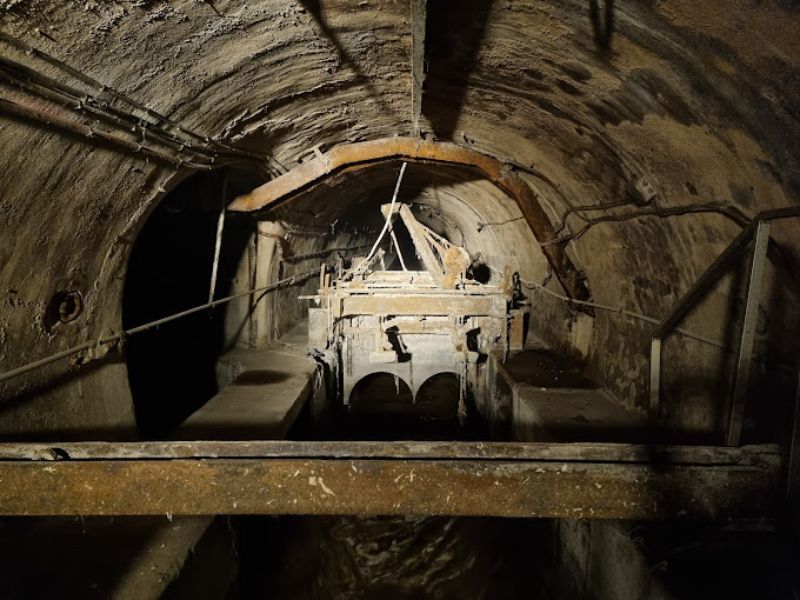
The Paris Sewer Museum offers an enthralling sensory experience that takes you deep into the mysterious underworld of Paris. During your time in the museum, be sure to take a moment and embrace all it has to offer: life-size mannequins, tunnels offering sights and smells from working sewers throughout the city, including its distinct scent. Plus there is also subterranean water movement providing plenty of soundscapes for those who explore.
This immersive environment provides unparalleled insight into one of engineering’s greatest marvels – within this hidden part of history lies true stories waiting to be uncovered by those willing enough dive down below what’s typically visible on surface level visits around The City Of Light. Nowhere else can such knowledge about sewer systems across Paris really come alive like they do at this particular museum!
Allowing visitors unique access through exploration right underground allows us greater understanding as well appreciation surrounding parisian infrastructure so long intertwined with daily living here in France’s capital over centuries gone past today alike . It definitely stands out as remarkable opportunity offered up by no other place quite like it!
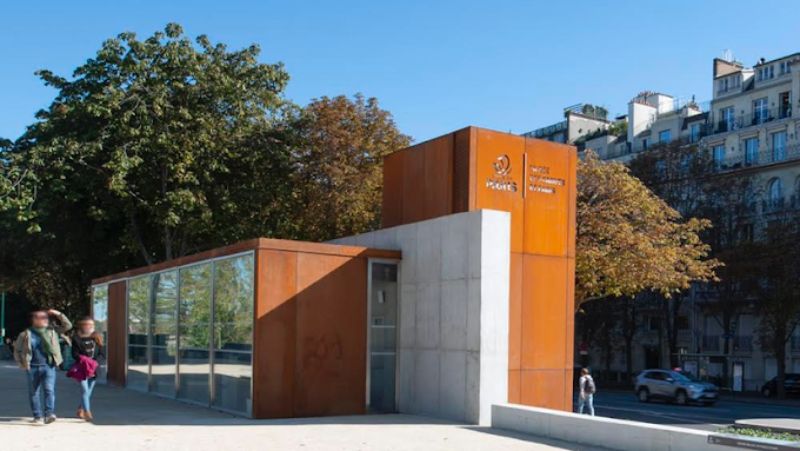
After exploring the Paris Sewer Museum, why not check out nearby attractions to Enjoy your visit? Only a short distance away you can find the symbolic Eiffel Tower with fantastic views of the River Seine and take in some beautiful Haussmannian architecture.
Make sure that during your stay in Paris , you experience all its heritage aboveground as well underground, get ready for a memorable journey!
If you’re looking to gain a deeper understanding of the Paris sewer system, resources like books, documentaries and more can be beneficial. For starters, check out the Museum of Sewers’ website in Paris , it offers comprehensive knowledge about subterranean sewers around this great city. For those fascinated by cultural or societal influences related to these drains. Architectural Review provides an informative article on Haussmann’s project titled ‘Down Parisian Drains: The Invisible Harm’.
The Paris Sewer Museum is equipped to meet various needs, as it provides both guided and self-guided visits . Those opting for a more structured approach can join museum staff on one of their comprehensive tours lasting between 1-2 hours which will give them insight into the history and impressive architecture behind the sewer system in Paris . For those who would prefer to explore without an instructor at hand they have the opportunity to travel through this complex network independently with no time frame or specific route set out for them.
No matter how you decide best observe this interesting piece of French heritage, whether that be embarking upon a tour led by knowledgeable guides or discovering its intricacies solo. All options are catered for here at The Paris Sewer Museum!
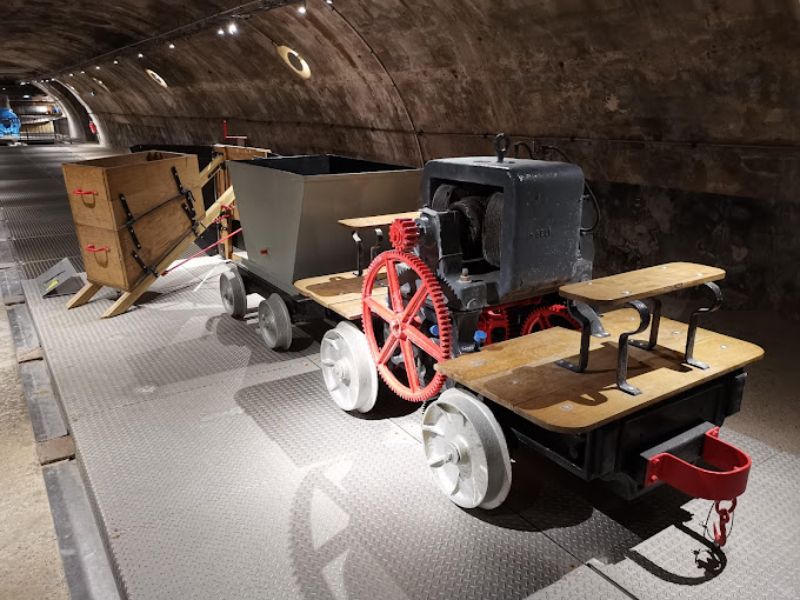
Take home a unique reminder of your experience in the sewers beneath Paris . The city’s Sewer Museum provides an extensive range of souvenirs and memorabilia at its gift shop, such as plush rats or trinkets to commemorate your tour. These keepsakes will be reminders that you have explored into this remarkable underworld below Paris .
Visitors to the Paris Sewer Museum have an opportunity for a truly one-of-a-kind, captivating experience. By exploring the network under the bustling streets of Paris they gain insight into its amazing engineering feats and learn about its rich history from prehistory up until today. During both guided and self guided tours , visitors can traverse through this hidden world beneath their feet and discover why it remains essential to everyday life in Paris’s underworld.
Whether you choose interactive activities or simply observe your surroundings as part of a group tour , there are plenty of ways to explore sewers underneath centuries old buildings like never before at The City’s museum dedicated specifically for learning more about sewer systems throughout time in our beloved city:Paris! With such great opportunities available no matter how experienced travellers might be with tunnels and passes away below street level, everyone is sure go leave feeling not only educated but also immensely grateful towards those responsible maintaining these incredible yet often overlooked infrastructure wonders that comprise modern day living within cities across all over Europe..
The Musée des Égouts de Paris, popularly known as the Paris Sewer Museum is a much sought-after attraction by tourists due to its unique underground tunnels and interesting history of the sewers. Without them, it’s certain that Paris would not be what it is today. The museum provides visitors with an in depth look into how fundamental sewer systems are for all cities including this one, making this place both fascinating and enlightening at once!
The sewage system in Paris, first constructed back in 1878 and stretching to 600 kilometers long, was designed with the intent of preventing illnesses that may be caused by unclean water.
The sewers of Paris have had a long history, having been created as early as 1370 and expanded under Napoleon Bonaparte in the 1800s. This system was eventually completed by his nephew Napoleon III almost 200 years later in 1894 making it one of the oldest sewage systems with tunnels underneath the city.
Admission to the Paris Sewer Museum is complimentary for all those under 6, and €3.50 for children aged between 6-16. Adults will be charged a fee of €4.30 upon entry into this unique museum located in the City of Light – an experience you won’t forget!
Visitors to the Paris Sewer Museum can enjoy a guided tour of around one or two hours exploring this historic underground network beneath the city.

Please rate this post
Your page rank:
Other Travel Guides
- Eiffel Tower History: The Iconic Landmark of Paris and Gustave Eiffel’s Masterpiece
- The Ancient Wonders of Pantheon Paris: A Travel Guide
- 18 Best Beaches Near Paris for Summer Getaways
- Expat Jobs in Paris: Discover Exciting Career Opportunities
- Job Opportunities in Paris: Can I Get Hired Without Speaking French?
- Immigration Attorneys in Paris, France: Expert Legal Services for Visas and Residency
Musée des Egouts

Top ways to experience nearby attractions

- Pont de l'Alma • 2 min walk
- Alma – Marceau • 4 min walk

Most Recent: Reviews ordered by most recent publish date in descending order.
Detailed Reviews: Reviews ordered by recency and descriptiveness of user-identified themes such as wait time, length of visit, general tips, and location information.
Also popular with travelers
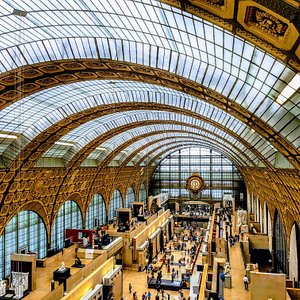
Musée des Egouts - All You Need to Know BEFORE You Go (2024)
- Tue - Sun 10:00 AM - 4:00 PM
- (0.10 mi) Juliana Hotel Paris
- (0.07 mi) River Seine / Eiffel / Rue Cler: Just Perfect!
- (0.18 mi) Hôtel Le Derby Alma By Inwood Hotels
- (0.26 mi) Hôtel Plaza Athénée
- (0.19 mi) Villa Marquis member of Meliá Collection
- (0.02 mi) Le Mirage
- (0.16 mi) 6 New York
- (0.06 mi) Le Café Pierre Hermé
- (0.13 mi) Berkeley garden
- (0.14 mi) La Table du Vietnam
- Become a Member
Down and Dirty: Explore the Paris Sewers at Musée des Égouts
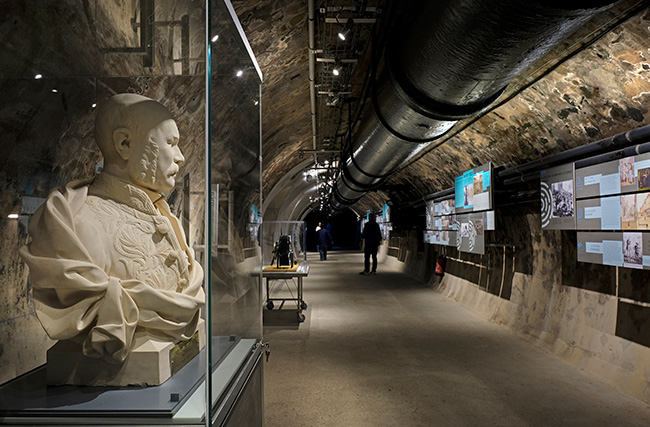
“The sewer is the conscience of the city,” prophesied Victor Hugo with bizarre fascination in his magnum opus, Les Misérables , first published in 1862. But if Paris is a city rhapsodized for its grandiose exterior, you’d be forgiven for not having explored the recently renovated Musée des Égouts de Paris, a quirky museum which, rather than celebrating the visible, transports you into Paris’s murky depths.
Indeed, underneath Paris lies another Paris – a Paris which sighs beneath the weight of a city replete with superlatives, but which nonetheless has plenty to offer. Acting as air-raid shelters during the Nazi Occupation and commandeered by the Resistance as first-aid stations during Paris’s liberation in 1944, history winds its way down the tunnels of Paris’s sewers, dormant underneath the buzz of life above it, waiting to be discovered by those who look beyond the quotidian.
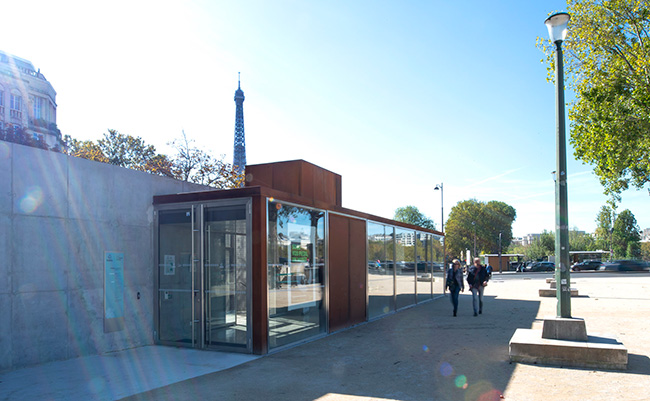
Exterior of Musée des Egouts. @ Olivier Placet
The Musée des Égouts de Paris in the 7th arrondissement, just around the corner from the Eiffel Tower, takes you through the history of the sewers in the very place where all the action happens.
Although the network is labyrinthine in its nature, art-deco style road signs within the sewers correspond to those which adorn Paris’s street corners, helping the vidangeurs to orientate themselves within the maze of passages. While rats are unwelcome visitors around the Sacré-Cœur and the Marais , in the égouts , rats are a worker’s best friend. The sewer workers rely on their furry friends to inform them about which areas have potentially fatal levels of noxious gases, indicated by the rodents running in the opposite direction. Our tour guide explained that the rats we see above ground, who are unafraid of the presence of humans, are a rotund species, thanks to the scraps of croissant crumbs dropped by peckish Parisian commuters. The species found in the sewers, however, are far smaller and terrified of coming face to face with a sewer worker.

But the sewer network we can see today has undergone a significant makeover since it was originally built in 1370 by Hugues Aubriot, Provost of Paris under Charles V. The early 19th century saw a period of seismic change in Paris, a metropolis already reeling from the political upheaval of the French Revolution . The population of Paris had doubled since 1815, allowing all manner of plagues and pestilence to spread around the city. Unsatisfied with the overcrowded and unsanitary nature of the French capital, Napoleon ‘s Prefect of the Seine, the much feted and simultaneously highly controversial figure, Baron Haussmann , orchestrated an urban renewal program of an unprecedented scale in any other Western metropole. Haussmann’s urban planning aimed to tackle overcrowding and the growing population by expanding the boundaries of the city, adding an additional eight arrondissements onto the existing dozen.

Baron Georges-Eugène Haussmann (1809-1891), Prefect of Paris, urbanist of the Napoleon III’s Paris, Public Domain

The renovation program – hugely controversial for its time – saw the mass demolition of buildings and avenues, making way for much of what characterizes the modern-day Île-de-France. This included four large green spaces, as well as the tree-lined boulevards and attractive wide thoroughfares, carefully and meticulously planned out, coaxing the unassuming eye towards Paris’s most breathtaking monuments and museums.
Built between 1853-70, Haussmann’s underground sewage system, a dense labyrinth of pipes, sewers and tunnels, updated the antiquated version. Previously, containers of waste were picked up each night by the vindangeurs who carried it to waste dumps outside of the city. The tunnels were extremely narrow and cholera epidemics, which had killed over 20000 Parisians, were rife, due to the unsanitary water and lack of waste management which lay stagnant in open gutters. The health risks were so severe that the vidangeurs were – and still are – permitted take retirement 10 years early.
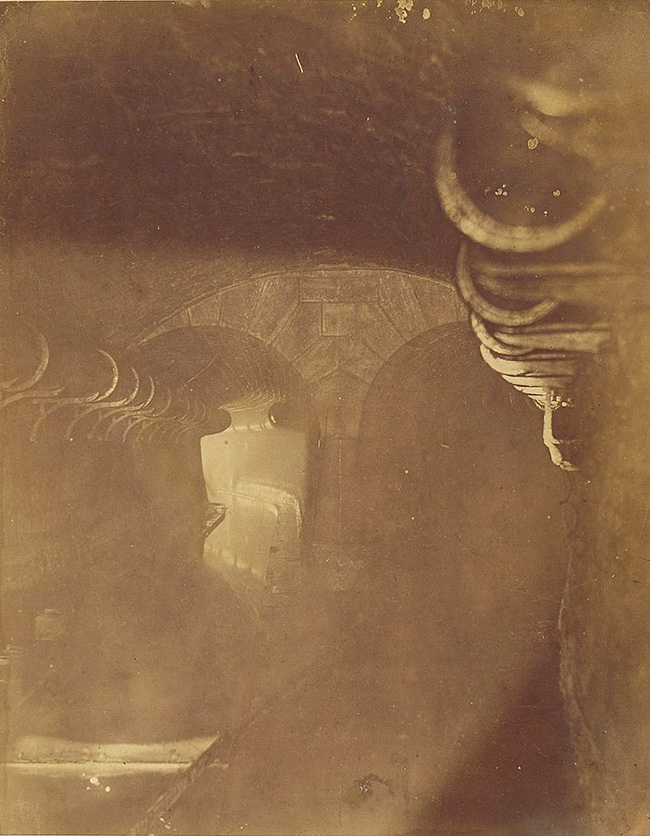
Displeased with the mismanagement of the sewers, under Haussmann’s ingenuity, the city’s underground system was completely reconstructed, creating a complex network of sewers which modernized the city’s archaic sanitation systems, flushing sewage downstream into the Seine. “These underground galleries would be the organs of the metropolis and function like those of the human body without ever seeing the light of day,” Haussmann wrote in 1854, boasting about the efficiency of his work. “Pure and fresh water, light and heat, would circulate like the diverse fluids whose movement and replenishment sustain life itself.”

Promenade dans le égouts de Paris. Rue du Château-d’Eau, Illustration by Morin after Nadar’s photography, 1865
Significantly expanding the tunnels in both height and width, Haussmann’s feat of engineering created a deft and agile network that became a hallmark of France’s industrial prowess. As a result, mortality rates dropped drastically, and rainwater was treated and cleaned so that, for the first time, there was a distinction between potable and non-drinking water. The renewed system also provided gas for heat and lights to illuminate Paris, literally giving it its nickname, ‘The City of Light’, a truism which holds to this day.
Want to see it for yourself? Discover more about the profession of the once overwhelmingly male vidangeurs , as well as the influence of Haussmann’s sewers authentically represented in Disney’s Ratatouille : the museum has something for everyone. En profitez-vous !
Musée des Égouts de Paris (Paris Sewers Museum) Esplanade Habib Bourguiba, Pont de l’Alma, 7th Tel: +33 (0)1 53 68 27 84 Regular ticket price is 9 euros. Open Tuesday to Sunday from 10 a.m. to 5 p.m. Last admission is 4 p.m. The duration of the visit is 45 min to 1hr15. Wear comfortable, flat shoes and dress warmly; the year-round temperature is 13°c.
Lead photo credit : Inside Musée des Egouts. @ Olivier Placet
More in architecture , history , Museum , Sewer Museum
Related Articles

Inventing Impressionism at the Orsay

Musée d’Orsay: From a Train Station to a Museum

1001 Orchids at the Jardin des Plantes
By claudia jacob.

Claudia lived in Paris for six months during a year abroad which she did as part of her French and Spanish degree at Durham University. With a penchant for all things culture, languages, food and flânerie, she quickly discovered why it is that the French capital is so widely celebrated. While she was in Paris, she started writing for Ma Vie Francaise, an online-based publication about Francophone cultures. After completing an MA in Newspaper Journalism at City, University of London last year, she’s currently working as an editorial intern at Monocle Magazine, a globally-minded publication which focuses on culture, urbanism and business. Her favorite Parisian hidden gem is the Musée de la Vie Romantique, and if you’re a gourmand(e), she recommends paying a visit to the Rue des Martyrs.

Home > The dirty side of Paris (Paris Sewer Museum)
The dirty side of Paris (Paris Sewer Museum)
Never wondered about what happens under the fashionable streets of Paris? The answer is at Paris Sewer Museum, in the 7th Arrondissement of Paris . This is a small museum that, despite being located in one of the most touristy areas in Paris, has few visits. A pity because few cities offer the possibility of such an original and quirky visit through their entrails!
READ MORE – Carrières des Capucins: the local alternative to Paris Catacombs
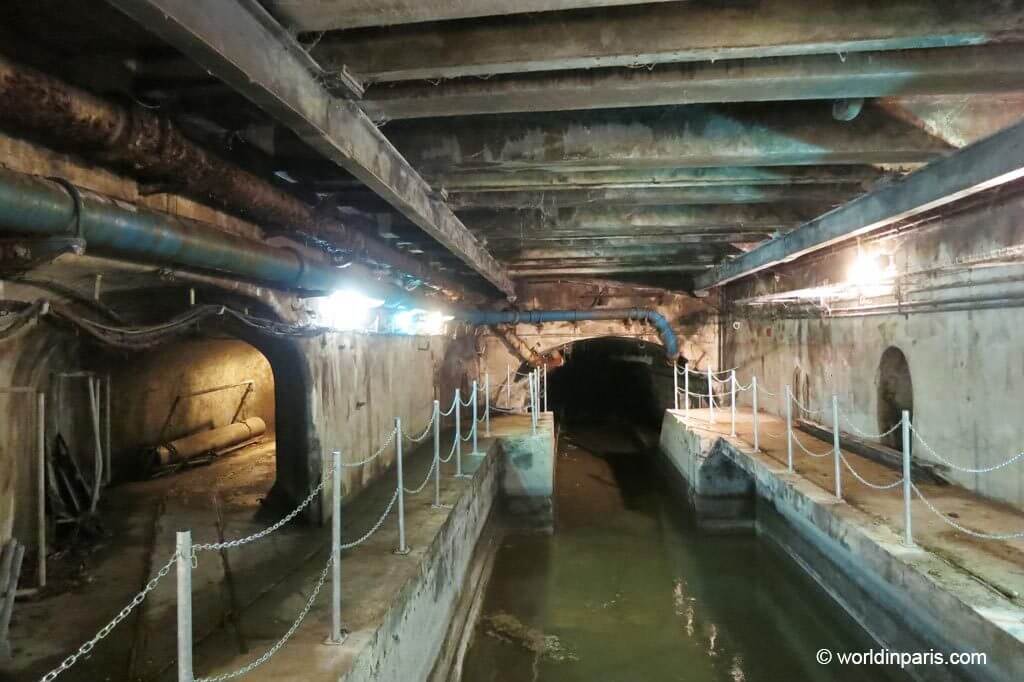
1889: A SEWER MUSEUM FOR PARIS
Organized tours of the Paris’ Sewers were first offered in 1889. Guided Paris Underground Tours were available during “the nice season” twice a month and visitors were transported through the sewer system on wagons and boats.
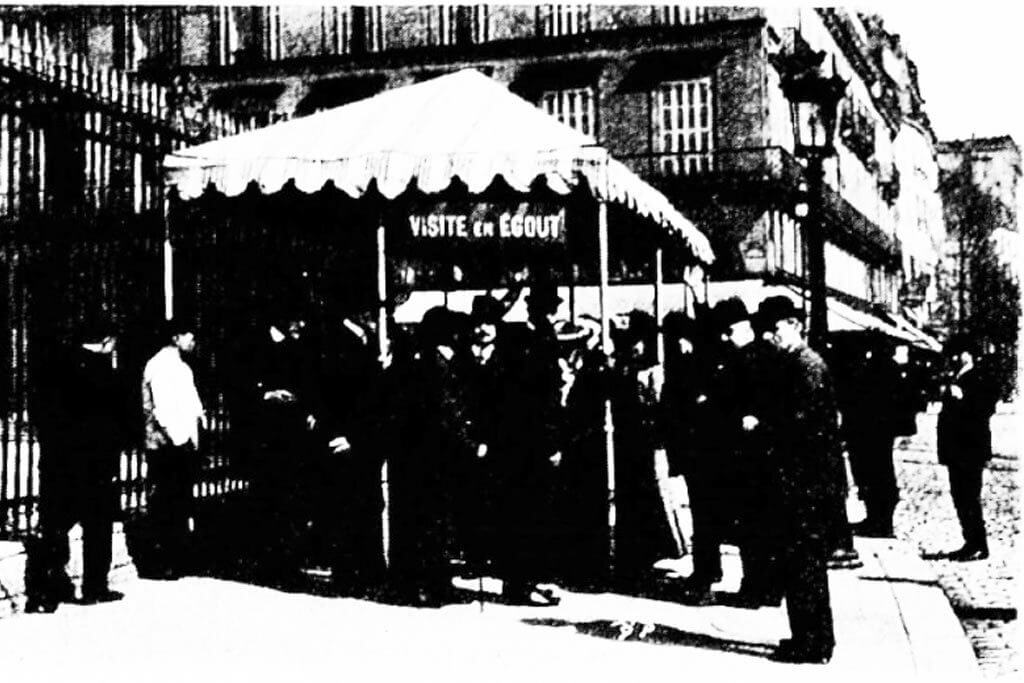
VISITING THE SEWER MUSEUM TODAY
If you are looking for unusual things to do in Paris , the Sewer Museum is a good place to start. Today the Paris Sewer Museum details along 500 m of their tunnels the history of drinking water in Paris and the sewer system in Paris, from the former Roman city of Lutetia (first name of Paris) to its modern structure (XIX century). The history of the sewers is explained in a very pedagogical way, all in parallel with the history of Paris. The museum also details the role of sewer workers and methods of water treatment. We were happy to know that Paris is the city which has the biggest and most modern sewer system in the world!
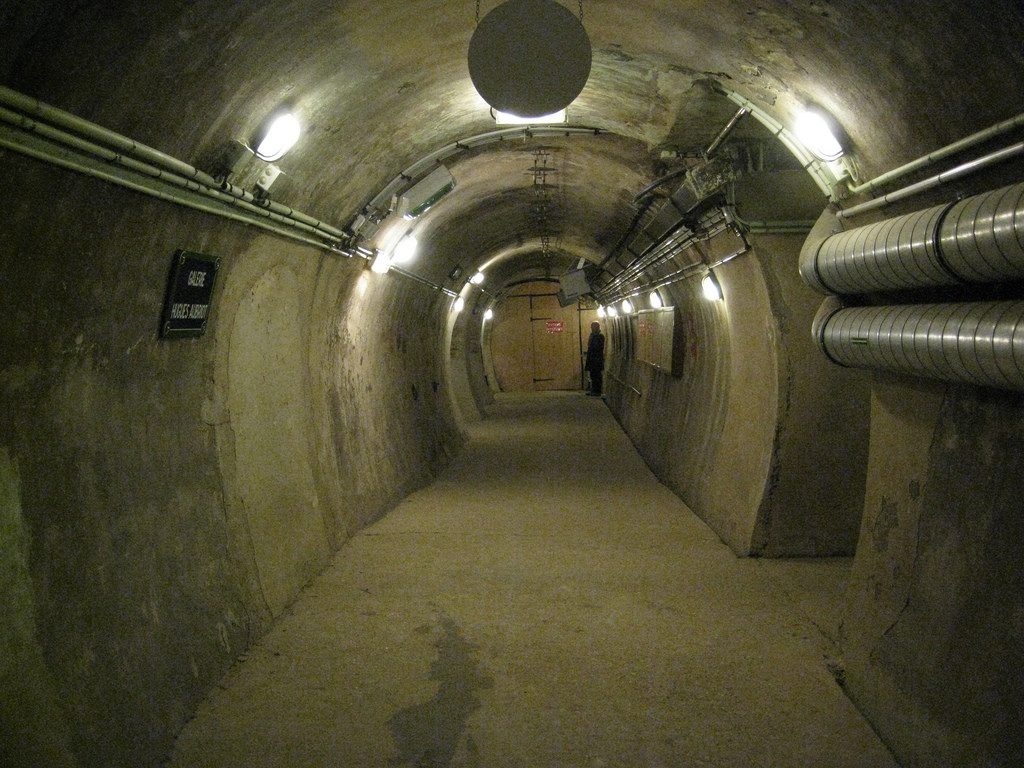
The Paris sewers system has 2.400 km of tunnels and galleries. In this Paris Underground City , the streets have the same name and the same Parisian street sign than their corresponding streets on the surface so impossible to get lost.
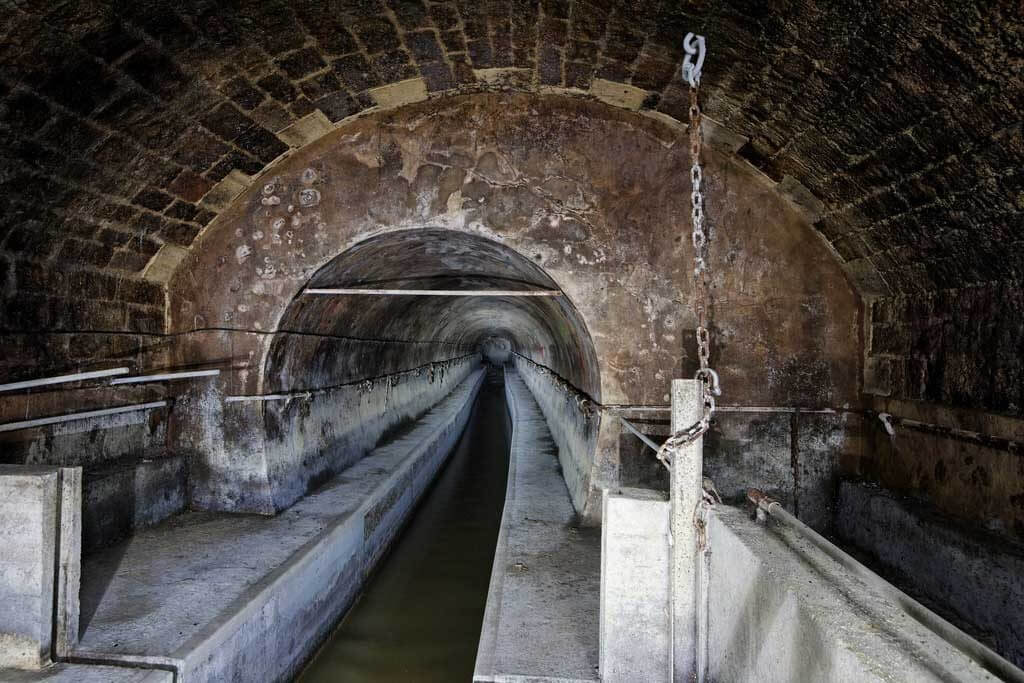
CURIOUS & INTERESTING THINGS THAT WE LEARNED
The Paris sewer system is also used to heat a local swimming pool in Paris. How? As in cities everywhere, thousands of liters of heated water drain into Paris’ sewage system every day. This water comes from showers, dishwashers and washing machines. The average water temperature through the sewage network is 13 degree Celsius during the winter and 20 degrees in summer. This domestic greywater naturally transfers its heat to the pipes that it flows through which then dissipates in the underground tunnels without any use. However, a new stainless steel lining can recapture between four and eight degrees of this warmth. The system, developed by French waste and water group Suez, can boost this to 50 degrees and pump water to where it is needed.
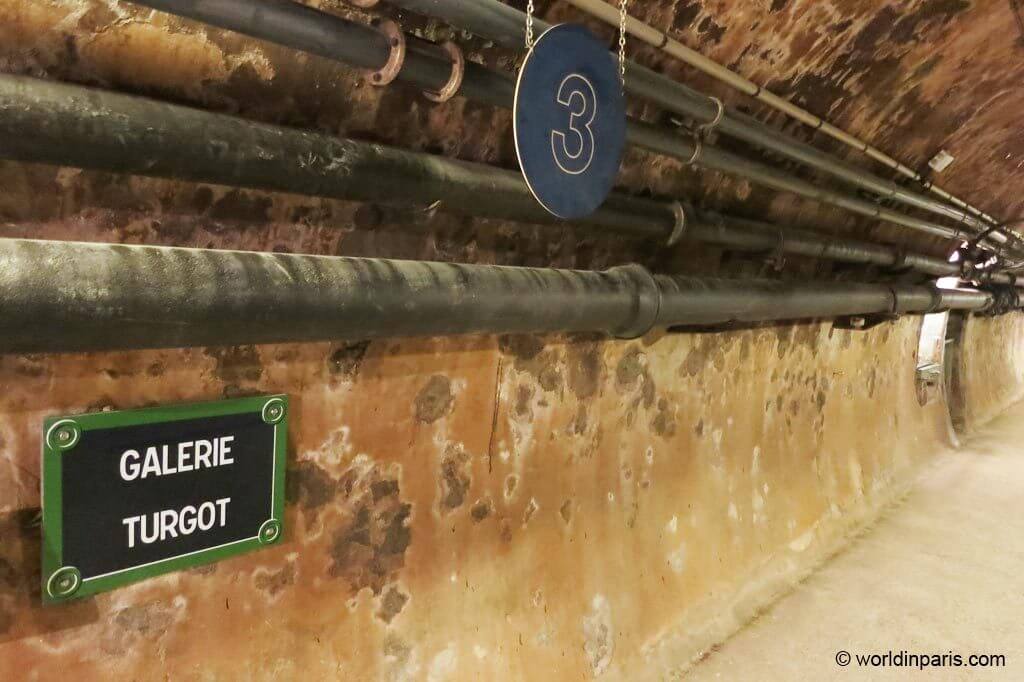
Some other interesting things that we learned during our visit:
- Romans built an initial sewer system along the alignment of the present Boulevard Saint Michel, flowing into the Seine in what is now Place Saint Michel;
- In 1802 Napoleon Bonaparte decided to dig the Ourcq Channel to supply up to 70.000 m3 a day. His decision followed his conversation with the chemist Jean-Antoine Chaptal, minister of the Interior at that time, during which Napoleon expressed his desire to “do something grand and useful for Paris”. Chaptal replied: give people water!
- The Alma Bridge (1854-56) inaugurated by Napoleon III to commemorate the victory against Russians in Crimea (1854) has 4 sculptures representing the four kinds of soldiers who participated in this war. The Zouave (French soldier from the North Africa armies) is the only original statue still on its place (the others were moved to museums) and has the sad task to measure the Seine’s floods . It is not an official measurement system, it is mostly a sentimental thing for Parisians. The access to the footpaths along the river quays is usually closed when the Seine’s level reaches the feet of the Zouave. When the water hits his thighs, the river is not navigable. During the great flood of the Seine (1910) the level reached his shoulders (+8.62m).
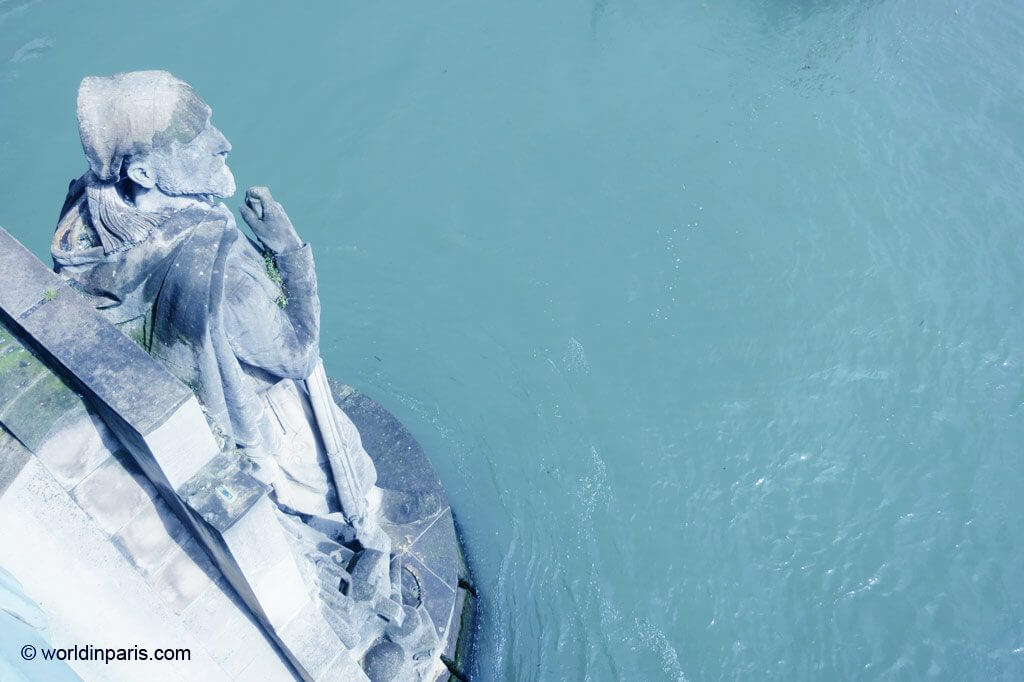
PARIS SEWER MUSEUM TIPS AND PRACTICAL INFO
We suggest visiting this museum in the summertime because the temperature is a little bit fresh.
The smell in the galleries is not that bad as you may think. If you are very sensitive it is better to visit this museum in the winter time when the smell is less strong.
The museum is open every day from 11.00 am to 5.00 pm (4.00 pm in winter time) except Thursday and Friday. In January the museum closes for 2 weeks for a general maintenance but the website does not specify the dates.
Ticket price is 4.2 € (Adults)
Address is Pont de l’Alma, place de la Résistance, (in front of 93 quai d’Orsay) 75007 Paris. M. Alma-Marceau, L9 or RER Pont de l’Alma-Musée du Quai Branly, LC; Vélib post #7.022
Post’s featured image via Flickr CC @Shadowgate
Click here to read more Paris Like a Local posts
Click here to explore other paris hidden gems, back to homepage.
Pin it now & read it later
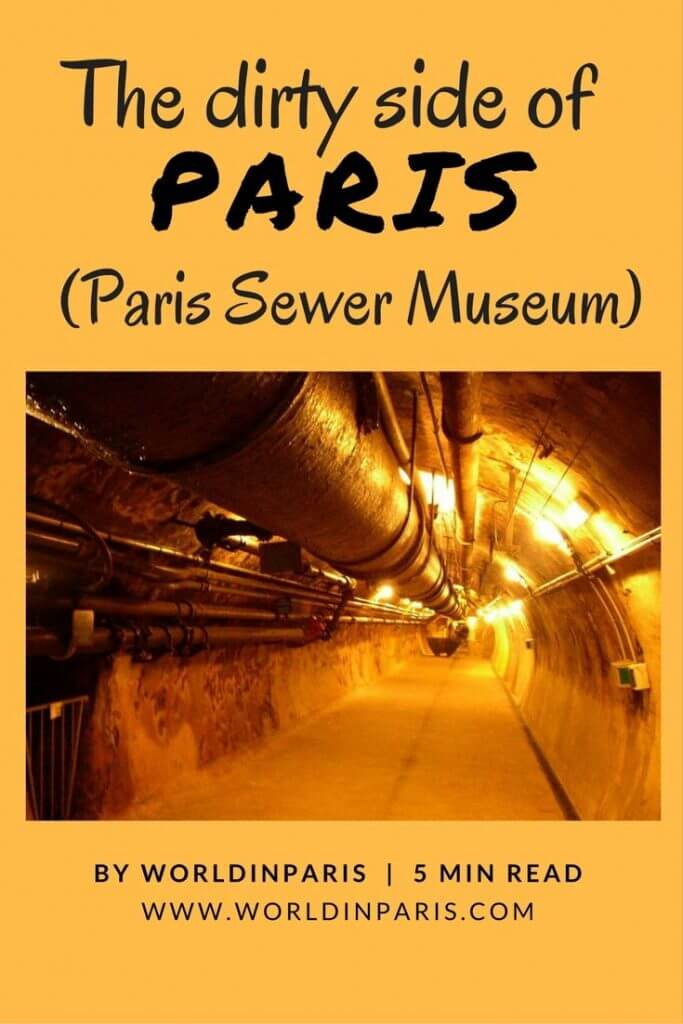
Disclaimer: this post includes affiliate links, meaning we get a small commission if you make a purchase through our links. It costs you nothing more (in fact, if anything, you’ll get a nice discount) but helps us to go on creating incredible Paris content for you. We trust all products promoted here and would never recommend a product that isn’t of value.
World in Paris is a participant in the Amazon Services LLC Associates Program, an affiliate advertising program designed to provide a means for sites to earn advertising fees by advertising and linking to amazon.com, amazon.co.uk, amazon.ca. Amazon and the Amazon logo are trademarks of Amazon.com, Inc. or its affiliates.
Mona Lisa Icon made by Freepik from www.flaticon.com
Disclaimer: This post includes affiliate links, meaning we get a small commission if you make a purchase through our links. It costs you nothing more (in fact, if anything, you’ll get a nice discount) but helps us to go on creating incredible Paris content for you. We trust all products promoted here and would never recommend a product that isn’t of value. World in Paris is a participant in the Amazon Services LLC Associates Program. As an Amazon Associate, we earn from qualifying purchases at no expense to you.

About WORLD IN PARIS
Quirky parisian explorers with a preference for lesser-known sights, we are continuously looking for new ideas and tips to bring you the best of the city of light read more about us ., i am elisa, the travel blogger behind world in paris. quirky explorer with a preference for the local side of my city and its lesser-known sights, i am continuously looking for new ideas to enjoy the best of paris & around . do you want to go beyond the louvre museum or the eiffel tower keep clicking for first-hand information & my best tips learn more.

Paris Sewers Museum: a curious and stinking tour of underground Paris
Sewers may not be the first attraction you consider visiting in Paris. Still, the Musée des Egouts is a must-see museum in the French capital, however unusual and smelly it may be. A popular destination for children and curious adults alike, the Sewer Museum offers an educational experience on the history and technology of the French capital’s sewer network through interactive exhibits and guided tours.
Table of Contents
About the Paris sewer network (and why visit)
The Paris sewer network is one of the world’s largest and most complex wastewater drainage systems, spanning 2,600 km of underground tunnels through which more than 300 million cubic metres of rainwater and wastewater flow every year. This network not only plays a fundamental role in the public health and hygiene of the city but also represents a work of engineering of great historical and cultural value.
PLAN YOUR TRIP TO PARIS Save money in Paris with the Paris City Card or the Paris Museum and Experiences Pass . Get free entry to major museums, climb the Eiffel Tower, and enjoy a Seine cruise and tourist bus. To stay connected in France, remember to buy an Airalo eSim online, with data and phone coverage for your trip to Paris.
A visit to the Paris sewers is a unique and fascinating experience, allowing you to discover the hidden side of the French capital and walk through an underground city. The tunnels in the sewers, in fact, run parallel to the streets above. In the sewers, drinking water and fibre optics run over the ceiling of the tunnels. Sewage and rainwater run downwards in separate pipes or different tunnels.
Visiting the Paris sewer network is quite exciting from an engineering point of view. The entire network of tunnels can be inspected to avoid road work in case of problems. Wastewater flows by the force of gravity, then is collected, redirected and pumped to treatment and purification plants, where it is treated to remove contaminants and pollutants.
The birth and development of the Paris sewers
The sewers of Paris, which are a precious part of France’s industrial heritage, play a vital role in maintaining the capital’s hygiene. However, before 1800, the underground sewer network was minimal, with only 16 kilometres of sewers serving 550,000 inhabitants.
Sewer management was based on ancient Roman sewers. It split street pavements into two sides, with central watercourses collecting trash dragged towards the sewers by water discharged daily from hydrants.
In the 19th century, due to cholera epidemics and increased awareness of water’s role in disease transmission, Paris and other major European cities expanded their sewer networks. However, the situation was still not optimal, particularly during periods of heavy rain when black water flowed back into the clear waters.
Napoleon III’s transformation of Paris: large boulevards and new sewer tunnels
The Musée des Égouts in Paris is inside the galleries created during the city’s modernisation in 1852 initiated by Napoleon III. The prefect Georges Eugène Haussmann carried out the process. Haussmann, who had also designed the city’s iconic boulevards, entrusted the rethinking of the water service to engineer Eugène Belgrand.
Belgrand’s work aimed to provide pure water to Paris at all times. Thanks to his efforts, Paris gained new reservoirs, a drinking water network in 1865, and a sewer network that could recover cleaning and rainwater.
Paris’ sewer network became one of the most hygienic and advanced cities of its time. As a result, the Parisian sewers became a public attraction during the Universal Exhibition of 1867 , with visitors able to tour the galleries just as they can today.
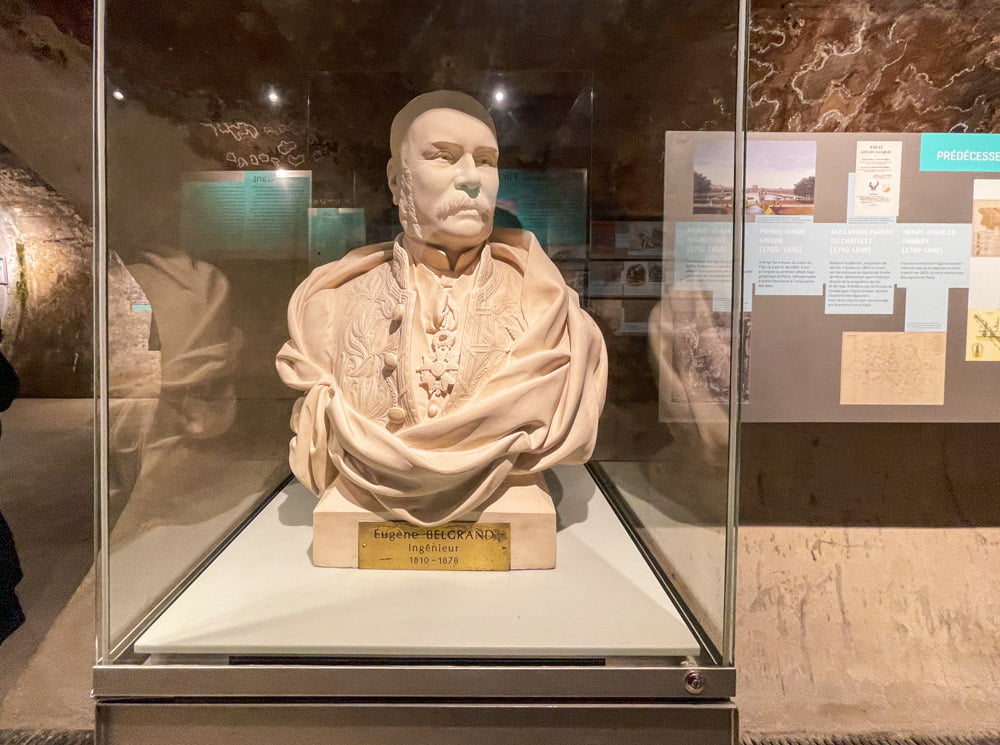
The sewers of Paris at the beginning of the 20th century
By the beginning of the 20th century, the sewer system in Paris had already become similar to what it is today. Sewage passed through the main conduit, and there were additional pipes for drinking water, non-potable water and compressed air pipes to transport pneumatic mail.
What’s on at the Paris Sewers Museum
The Paris Sewers Museum, Musée des Égouts in French, is an unusual and fascinating stop for visitors to Paris. Founded in 1867, it offers visitors the chance to discover the history and workings of the city’s sewers.
Initially, the sewers tour was done by boat. Still, as many visitors were reaching out to touch the sewers, it became a walking tour for hygiene. Today, the tour includes a permanent exhibition section and a guided tour through the sewer tunnels.
Permanent exhibition
In the main exhibit of the Paris Sewer Museum, open to the public without a guided tour, you can see various installations that explain how the sewer drainage system works, the history of the creation and evolution of sewers, and their role in disease prevention and public hygiene.
The museum aims to educate the public about waste management and show the vital work the city’s sewers do. You can find out how grey and black waters are sorted from homes or where the metro tunnels are located through interesting interactive installations. You can also observe the layout of the clear water and fibre optic pipes for yourself.

Guided tour of the Paris sewers: what to see
The Paris sewerage tour is an intriguing experience that allows visitors to explore a less-known side of the city. The sewerage network lies beneath the streets, with tunnels of various sizes crisscrossing the city’s surface.
The guided tour covers approximately 500 meters of tunnels. It provides a unique opportunity to comprehend the functioning of the sewer system and its significance for public hygiene. During the tour, the guide explains the operation of the sewer system, its history, and its importance for public hygiene and provides a wealth of fascinating information.
For instance, during the tour, my son and I learned that in the Napoleonic era, there was no safety equipment for entering the sewers. In contrast, it is mandatory to wear boots, gloves, helmets, torches, masks, and toxic gas detectors today.
Over the years, the way to clean sewage pipes has also evolved. Nowadays, workers use pressure rather than drag heavy metal balls through the tunnels or the ‘ bateau vanne’, a boat for cleaning wider channels, displayed along the tour route. Another interesting fact is that the Paris metro tunnels never intersect with the sewer tunnels because they are at a lower level.
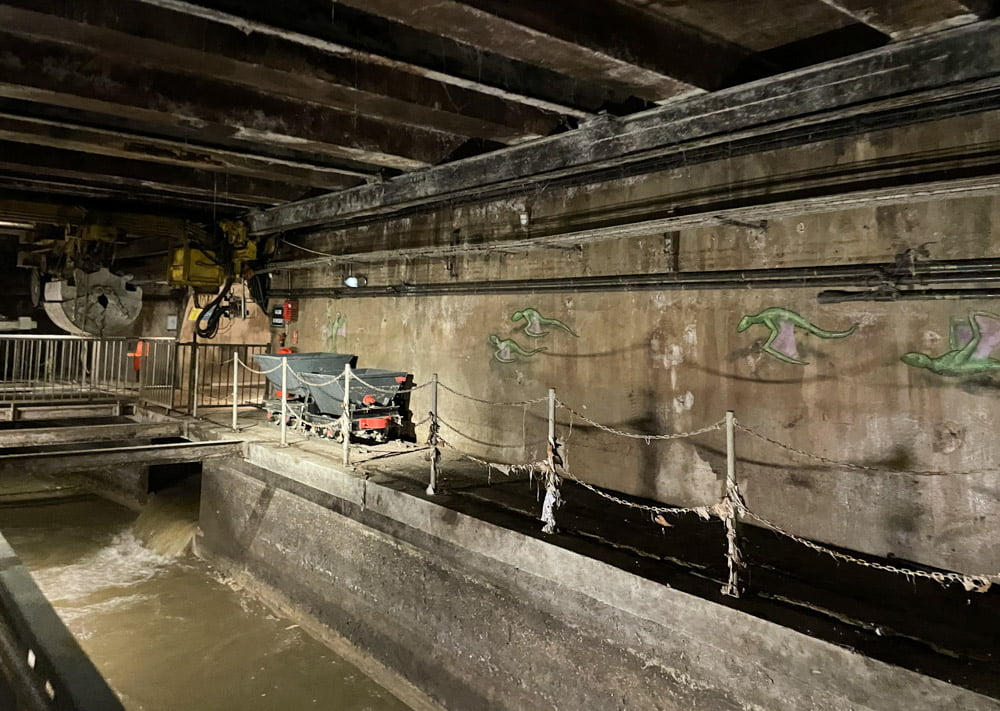
The Paris Sewers Museum with children: what to expect
The Paris Sewer Museum is an educational and fun experience to share with children. At the Musée des Égouts in Paris, children can have an immersive experience thanks to various interactive installations to learn about the history and functioning of the French capital’s sewer system. In the permanent exhibition part, they can watch videos with cartoons illustrating the workings of the sewer system and play with building drainage diagrams and tunnel diagrams that light up by pressing buttons.
During the guided tour, children have a lot of fun seeing the machinery and discovering sewers. To make the most of the experience at the Paris Sewers Museum, I recommend you prepare the children before the visit by explaining the history and functioning of the city’s sewer system. This way, the children will be more attentive and appreciate the guided tour more.
However, the tour guide who leads the tour can significantly influence the overall experience . A friendly and helpful guide can make the experience memorable, while a rude guide can leave one dissatisfied. Although my first time in the Paris Sewer Museum, I encountered a friendly and helpful guide, during a visit with my son and other friends, we ran into a rude guide who was disturbed that we were translating for the non-French speakers in our group.
Nevertheless, the Paris Sewer Museum remains a must-see experience for children, who will be fascinated by the history and functioning of the sewer system. Just as importantly, as a parent, you can turn your children’s fascination with poop into a helpful engineering skill.
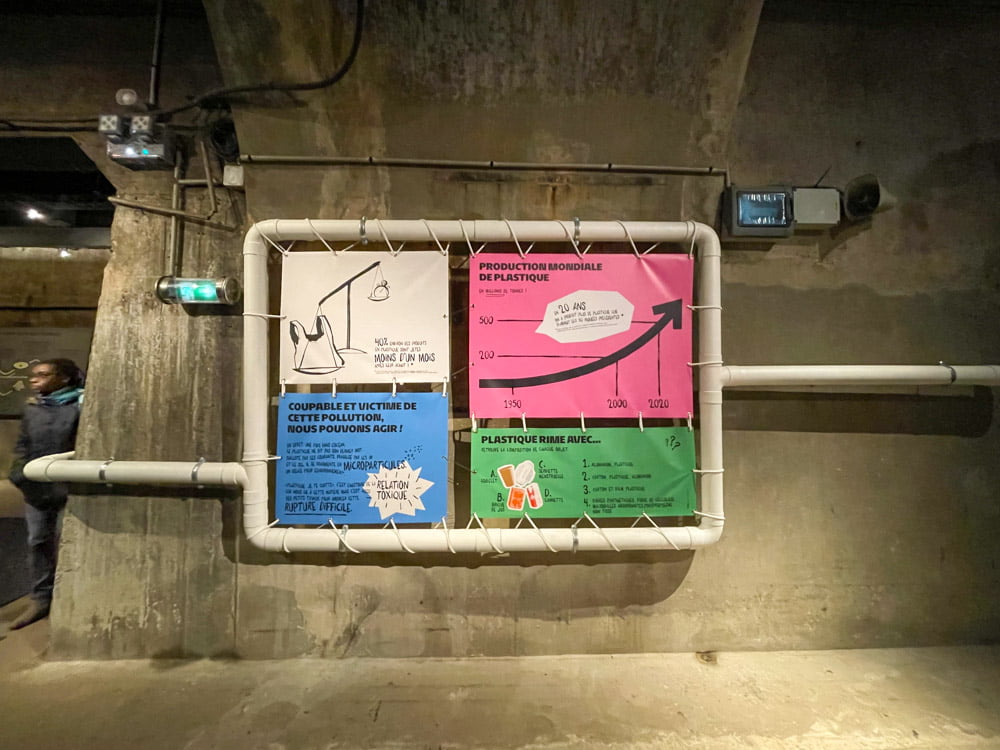
Practical information for visiting the Paris Sewer Museum
The Paris Sewer Museum offers a unique experience that allows you to discover an extraordinary work of public engineering and to enter the imagination of the city’s inhabitants and artists, such as Victor Hugo, who made the characters of Les Miserables move along the underground tunnels.
Frequented mainly by French tourists, the Musée des Égouts is much less smelly today than a few years ago. It offers fascinating guided tours included in the entrance fee, perfect if you want to discover a lesser-known side of the French capital.
Considering that the museum is all underground and involves a short walk, I recommend wearing comfortable shoes and carrying a sweater or jacket, as the temperature underground is about 15 degrees all year round. Especially in summer, when Paris gets very hot and muggy, it is great to discover their refreshing temperature.
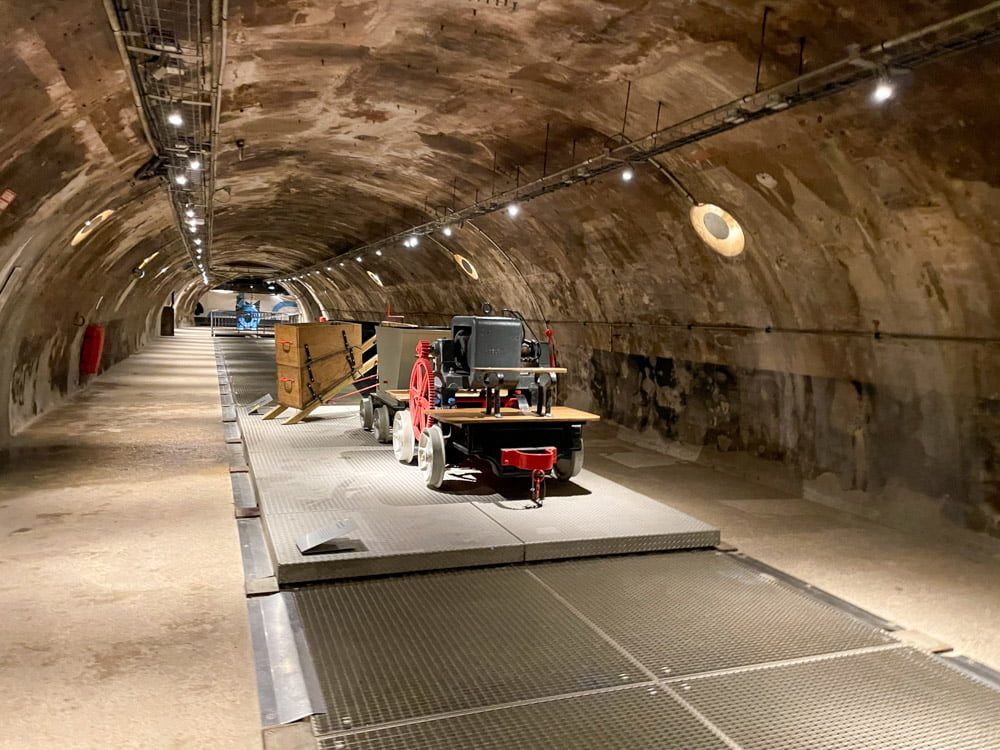
Guided tours of the Musée des Égouts in Paris
The entrance fee includes a French or English guided tour of the Paris Sewers Museum. Tours start every hour, depending on the number of people and the availability of guides. The meeting point is in the permanent exhibition area.
The museum also offers guided French educational tours for children aged 8 to 12. These visits include activities to discover the water cycle, learn ecological gestures to adopt as a family and understand the management of sewer flows to preserve the natural environment.
Paris Sewers Museum: opening hours and how much tickets cost
The Paris Sewer Museum is open Tuesday to Sunday from 10 am to 5 pm, with the last admission at 4 pm. When planning your trip, remember that, apart from Mondays, the museum is closed on 1 May, 25 December and the first 15 days of January.
Admission is free for those under 18, while the ticket price is €9 for adults. You can purchase your admission tickets directly at the ticket office, which also informs you about the language and time of the first available guided tour.
How to get to the Musée des Égouts de Paris
The Musée des Égouts in Paris is on the left side of the Seine ( rive gauche ) at Pont de l’Alma. Although it is entirely underground, you can recognise the entrance to the museum from the outside structure. You can get to the Sewer Museum comfortably by public transport. The nearest metro stop is Alma-Marceau, on line 9, while the RER line C stops at Pont de l’Alma. In any case, always check Google Maps for the best route to your starting point.
Musée des Égouts de Paris (Paris Sewers Museum) Esplanade Habib Bourguiba Pont de l’Alma, 75007 Paris
Where to stay in Paris
Sleeping in Paris can be expensive, prompting you to consider staying outside the city centre. In such a case, before selecting a hotel, I suggest you read my article on the best and worst neighbourhoods to stay in Paris .
I’ve visited Paris on several occasions for leisure and work, and I recommend a few places I’m familiar with. If you’re looking for a unique stay, Hôtel de Joséphine Bonaparte , built inside a 17th-century convent and located in the Marais district, is an excellent choice.
To save money, opt for the more affordable Hotel Bloum , situated close to the Opera and decorated with customised furnishings. Alternatively, the Aparthotel Adagio Paris Montmartre offers contemporary, self-catering apartments, perfect for families looking for more space in their rooms.
The Paris Sewers Museum is a must-visit place to discover an unusual side of the French capital and see the city from an underground perspective. This museum is unique because it offers the only tour of a sewer network in France. Comment if you have already visited the Musée des Égouts and if, after reading this article, you plan to add it to your list of things to see in Paris.
War Memories in Rovereto: a journey into the heart of history at the Museo Storico Italiano della Guerra
Muse trento: a journey through the wonders of natural science, you may also like, where to sleep in paris: the best and..., chateau d’if: the french alcatraz in front of..., city of science and industry in paris: discovering..., unveiling parisian underground: your ultimate guide to navigate..., les canards de paris: the amazing guided tour..., paris air and space museum: a journey into..., leave a comment cancel reply.
Save my name, email, and website in this browser for the next time I comment.

IMAGES
VIDEO
COMMENTS
Its clean-lined building will pull the hidden sewers of Paris from the underground shadows into the light. Permanent exhibition Guided tours Thematic workshops. The Sewers, a space with history. The Paris underground sewers are the result of large works launched at the beginning of the 19th century, motivated by scientific knowledge and the ...
Visiting the Paris sewer museum. The Musée des Égouts de Paris is on the south bank of the Seine, close to the Eiffel Tower. Most of the museum is underground, so it's easy to miss, with just a small, rust-red and glass building on the surface. The museum underwent a major refurbishment in 2021 with new exhibits inside and improvements like ...
He expanded the sewer system (adding over 1,000 kilometers/621 miles of new sewers) and the size of the drains and roads, started a treatment plant, and began to build aqueducts so Paris could pump in drinking water from the surrounding area. As the sewers expanded, disease and pollution declined, leading to decreased mortality rates.
Alma bridge, Place Habib Bourguiba, 75007 Paris. Opening hours. Closed on May 1, December 25 and the first 15 days of January. Influx. Accessibility. The tour is accessible for people with disabilities and in particular with reduced mobility, including wheelchair accessibility. Duration of the visit. Tour conditions.
Venture beneath the Paris streets into the subterranean sewer system that has snaked under the city for over 200 years. On this 1.5-hour Viator Exclusive tour in English, walk through darkened tunnels to learn the secrets of this underground world that manages the city's water supply and protects it from flooding of the River Seine. From 19th-century engineering feats to cultural references ...
Hours and tickets: The Paris Sewers Museum is open Tuesday to Sunday from 10 a.m. to 5 p.m. (Closed on May 1 and December 25.) Last admission is at 4 p.m. Ticket prices are reasonable, with discounts for various groups and free admission for kids under 18. Tours: Guided tours are free when available.
The Paris Sewer Museum ( French: Musée des Égouts de Paris) is dedicated to the sewer system of Paris. Tours of the sewage system have been popular since the 1800s and are currently conducted at the sewers. Visitors are able to walk upon raised walkways directly above the sewage itself. The entrance is near the Pont de l'Alma .
Visiting the sewers of Paris means diving into the intestines of the city and exploring its hidden realms. Intimately linked to the architectural evolution of the streets of the capital, the sewers museum offers a way to discover the history of this network. Pedestrians in the upper world walk on the sewer plates while barely paying any attention to the underground world below them.
Address. Esplanade Habib Bourguiba, Pont de l'Alma, 75007 Paris, France. Phone +33 1 53 68 27 84. Web Visit website. One of the city's odder tourist attractions, the Musée des Egouts (Paris Sewer Museum) affords visitors an intriguing glimpse into the historic sewer system, first developed around 1370 and extended very slowly in the centuries ...
During the tour of the sewer visitors will discover the evolution of the sewage system and its usage whilst wandering along its dark and humid passages. During the visit you will learn about the flood that destroyed Paris in 1910 due to a malfunction of the sewage system , or how in Victor Hugo's novel, Les Miserables, the sewers are ...
Overview of the tour in Paris. On this 1.5-hour exclusive tour, walk through darkened tunnels to learn the secrets of this underground world that manages the city's water supply and protects it from flooding of the River Seine. From 19th-century engineering feats to cultural references such as in Victor Hugo's 'Les Misérables ...
By 1878, the sewer system was over 373 miles long, and today the network extends 2,100 kilometers beneath the streets of Paris, or farther than the distance from New York to Miami. Hugo said of ...
The sewers of Paris have had a long history, having been created as early as 1370 and expanded under Napoleon Bonaparte in the 1800s. This system was eventually completed by his nephew Napoleon III almost 200 years later in 1894 making it one of the oldest sewage systems with tunnels underneath the city.
Open now. 10:00 AM - 4:00 PM. Write a review. About. Under your feet, a museum : The Paris Sewer Museum, brand new, reopens its doors! A unique, mysterious and didactic museum that claims to belong to 150 years of history as well as its modernity turned towards the environment, with a completely renovated building, visible from the Seine.
The Paris Sewer Museum (Musée des égouts de Paris) was established in the prestigious and elegant seventh-arrondissement of the Paris region. The museum is accessible at the Pont de l'Alma station, on the right bank, on 93 Quai d'Orsay. Metro/ RER: Alma - Marceau. Metro line 9; cross bridges to reach Museum, Pont de L'Alma. Tel. : 013 ...
Musée des Égouts de Paris (Paris Sewers Museum) Esplanade Habib Bourguiba, Pont de l'Alma, 7th. Tel: +33 (0)1 53 68 27 84. Regular ticket price is 9 euros. Open Tuesday to Sunday from 10 a.m. to 5 p.m. Last admission is 4 p.m. The duration of the visit is 45 min to 1hr15. Wear comfortable, flat shoes and dress warmly; the year-round ...
The Paris Sewer Museum (French: Musée des Égouts de Paris), is a museum located in the sewers at the esplanade Habib-Bourguiba ... Organized tours of the sewers were first offered in 1889. Tours were available twice monthly, and visitors were transported through the sewers on boats and wagons.
Number of visitors : 25 maximum. Reservation required by email to this adress : [email protected] Specify name and location, the language spoken, contact details of the group leader, level and age of visitors, the type of visit : free or guided tour. Rates : from 7 to 15 people : 120 € ; from 16 to 25 people : 200 €.
READ MORE - Carrières des Capucins: the local alternative to Paris Catacombs. 1889: A SEWER MUSEUM FOR PARIS. Organized tours of the Paris' Sewers were first offered in 1889. Guided Paris Underground Tours were available during "the nice season" twice a month and visitors were transported through the sewer system on wagons and boats.
Paris Sewers Museum closed its doors in 2018 for a complete renovation. It will reopen in 2021, with a new permanent exhibition, new passageways and activities. The entrance to the museum is now in a new building, where the reception and the ticket office are located. The building's architecture, based on modern and efficient materials, will therefore transport the Museum of Sewers from the ...
Guided tour of the Paris sewers: what to see. The Paris sewerage tour is an intriguing experience that allows visitors to explore a less-known side of the city. The sewerage network lies beneath the streets, with tunnels of various sizes crisscrossing the city's surface. The guided tour covers approximately 500 meters of tunnels.
Upon entering the new reception building of the Paris Museum of Sewers, you are invited to submerge yourself, where an underground city awaits you to visit its permanent exhibition. Get ready for an extraordinary tour, where you'll discover the sewers in full activity and the industrial achievements behind their erection. Download the plan.
Presenter and art historian Sandrine Voillet takes an alternative guided tour of Paris by delving deep into the subterranean labyrinth of the city's sewers. ...